On August 29, 2025, the world will be able to tune into Apple TV+ and binge KPOPPED, a new competition series unlike anything we’ve experienced before. Artists from around the world will collaborate to reimagine one of their chart-topping songs, performing before a live audience. It’s global legends and K-pop idols coming together to be crowned the winner by votes, and all of the excitement is happening in Seoul!
K-pop girl group BLACKSWAN (Korean: 블랙스완) is getting in on that excitement as participants. As a group born from the ashes of a legendary South Korean concept, the “swan” in their name could genuinely be replaced with a phoenix – they’ve reinvented the image of what it means to be a bonafide K-pop idol. As the first Korean-language major girl group with a full lineup made of non-Koreans, they intend to compete with global luminosity on their side.
In this interview, we connect with members Sriya and Nvee and hear their thoughts about KPOPPED and what fans should anticipate. Please enjoy!
Ashley Borjon, Host & Historian
Ashley is a content creator, educator, and public speaker. As an authority on the Hallyu phenomenon, she has collaborated on projects and events with various domestic and international companies and brands as a music historian. As the host of An Album a Day, she leads an English-language podcast promoting commentary on South Korean pop music. Learn more about her at https://www.a3daypodcast.com
#BLACKSWAN #KPOPPED #hallyu #kcrush #kcrushinterview #interviewwithBLACKSWAN #AppleTV #kpop #kcrushamerica #kcrushmagazine #SouthKorea #SeoulKorea #newmusicshow #girlgroup #koreanculture
PLAYBACK (플레이백) debuted in 2015 with the single “Playback”. Despite strong talent and fan support, the group went inactive by 2018 and unofficially disbanded soon after. Since then, the members have branched into acting, solo music, content creation, and even new careers. Here is what each member is up to now.
Hayoung
Hayoung pursued acting after PLAYBACK, signing first with Management Nangnam and later with O& Entertainment, changing her stage name to Han Na Young. On July 2021, Hayoung signed with Echo Global Group and started using Lee Ha Young her birth name, as her stage name. She appeared in web dramas such as “On the Campus” (2019) and “To My Beautiful Woo Ri.” Recently, she took supporting roles in bigger productions, including “Call It Love” (2023) and the movie “Dead Man” (2024). Hayoung interacts with fans through her SNS platforms including Instagram.
Woolim
After PLAYBACK went on hiatus, Woolim debuted under OD Entertainment through The Pink Lady project girl group. The group debuted in February 2019 with the “God Girl” digital single. She then signed with Lean Branding in May 2021 and released some tracks including “My Dummy Darling” digital single, before the contract ended in January 2025. Woolim has also appeared in some television shows including ‘Immortal Songs 2’ in 2023 as a guest singer. Woolim also keeps up with her fans on her YouTube channel and other SNS channels including Instagram.
Yujin
After PLAYBACK went on hiatus, Yujin signed with FN Entertainment to focus on acting under the name Oh Chae Yi. She went on to star in Kdramas like “Gracious Revenge” (2019) and “Unpredictable Family” (2023). Yujin often interacts with fans through her Instagram page.
Yunji
Yunji has maintained a low profile since PLAYBACK went on hiatus. Based on her SNS feed, she works as an idol trainer. In March 2023, Yunji got married, and some PLAYBACK members reunited to celebrate her wedding. She occasionally posts updates with trainees and PLAYBACK friends on her Instagram page, but otherwise lives a more private life.
Eunjin
Originally removed during pre-debut, Eunjin was added back to PLAYBACK in 2017. After PLAYBACK’s hiatus, she released the “Can Do Nothing” OST for the drama “Touch” (2020). Since then, she’s been less active in mainstream entertainment. She interacts with fans on her Instagram page.
Though PLAYBACK’s group activities died down, each member has found her own path—whether in acting, solo music, mentoring, or personal life. Their story reflects both the struggles of K-pop groups and the resilience of idols who reinvent themselves beyond the stage.
—-Karen Mwenda
#PLAYBACK #WhereAreTheyNowPLAYBACK #Eunjin #CanDoNothingOSTbyEunjin #kcrush #kpop #kpopidol #Yunji #Yujin #FNEntertainment #OhChaeYi #GraciousRevenge #kcrushamerica #kcrushmagazine #Touchkdrama #Woolim #PinkLadyProject #Hayoung #HanNaYoung #LeeHaYoung #EchoGlobalGroup #OnThe Campus #CallItLove #Korea #koreanactress #koreankpop #kdrama #lifeafterkpop #WhereAreThePlaybackMembers
Editor : Evgeniya Hong
Rising K-pop newcomer Hwina is captivating listeners with her poetic lyricism and emotional depth. After debuting with hits like “Like a Tree”, she quickly became a name to watch, not only for her delicate yet expressive vocals but also for her lyrical storytelling. Her works such as “Noise Canceling” and the recent “A Secret Tale About Us” explore themes of identity, emotional healing, and quiet strength. In 2025, she gained national attention when she was selected as one of the final 10 artists for the MUSE ON 2025 program, beating out over 400 other applicants in the highly competitive selection process, solidifying her place among Korea’s new generation of singer-songwriters. We sat down with Hwina to talk about her journey, inspirations, and what lies ahead.
Who is Hwina and what is the story behind your name and artistry?
Hi KCrush readers! I’m Hwina, a singer-songwriter who creates music across pop, R&B, and synth-pop. My name represents my desire to shine through my music and connect with people on a deeper level.
Your debut mini album, “Like a Tree”, gained traction upon release. What emotions or stories were you hoping to express through the title and release in general?
My debut EP captures the emotions I experienced while growing up, especially those that shaped who I am. Since it was my first time opening up to listeners, I wanted to be completely honest. “Like a Tree”is about standing tall, growing stronger, and becoming someone who can offer comfort and strength to others. It reflects my positive mindset and my ongoing journey of personal growth.
Looking back, was there a defining moment when you knew you wanted to pursue music professionally?
I’ve always loved singing, but there was a moment in middle school that made everything clear. A friend who had made things difficult for me once said, “If you become a singer, I’ll ruin you.” Oddly enough, that pushed me even harder. I wanted to prove that I could succeed not just as a singer, but as a kind and strong person.
In “Noise Canceling”, you wrote about escaping from the noise of the world. What “noise” have you personally had to cancel out to find your own voice?
The noise I had to cancel was mostly my own anxious thoughts, like “Am I doing okay?” They shook me a lot. On top of that, there were outside expectations and comparisons. If I let those take over, I’d lose my true voice. So I learned to let go of the noise and focus on the stories I really want to tell. That’s how I found my own voice.
What’s one fact about you that fans have no idea about?
I really love soft and cozy things like blankets and plush toys. They calm me down and make me feel better. I always keep a blanket with me at home.
Your recently released the “A Secret Tale About Us” single has got many fans talking. What was the inspiration behind this piece?
It’s based on a real experience. When I was young, a boy and I watched a romance movie together, and we promised that even years later, we’d watch it again. I didn’t necessarily miss him, but that pure and innocent moment inspired the song.
Which artists, regardless of genre, inspire your sound and lyricism?
I’ve always looked up to IU. Watching her, I thought, “I want to be that kind of artist.” I want to be versatile, with a broad musical range and a lot of charm.
You were selected as one of the final 10 artists for the MUSE ON 2025 program, chosen from over 400 applicants. What did that moment mean to you as a rising artist?
It felt like recognition for all the work I’ve done so far. I’m really grateful, and I see it as a new opportunity to connect with more people through my music. It was a real turning point for me.
Fans are also excited about potential collaborations with new artists. Are there any Korean or international artists you’d love to work with in the future?
I’d love to collaborate with Lee Chan-hyuk from AKMU. I enjoy trying different genres, and working with him would be such a wonderful musical adventure. I’m also open to all kinds of creative ideas, even fashion collaborations.
We heard you’ll be releasing a new album soon through MUSE ON 2025. Could you tell us about the upcoming album?
The EP, coming out in October, is centered on synth-pop. It follows a journey from the bright, sunny moments of youth, to facing unavoidable realities, and finally to exploring the deepest parts of yourself.
If you had to write a letter to your future self, five years from now, what is the one thing you would want to say or ask?
I’d tell myself, “Keep sharing love with the people around you.” No matter how far you’ve come, never forget the importance of staying genuine and close to the people who support you.
With the increasing wins and recognitions, what should fans be looking forward to in the near future? Any upcoming projects?
To stay true to that promise, I’ll keep making honest music. In September, I’ll be releasing a pre-release single, followed by my new EP in October. With these releases, I look forward to meeting fans more often and getting closer through concerts, live performances, and broadcast appearances.
What would you like to say to your fans who are always rooting for you?
It might seem like I’m walking this path alone, but I’ve really been walking it with all of you. I hope we can continue sharing our hearts through music for a long time. I’ll repay you with good songs, and with my new EP coming out this year, I’m excited to meet you more often through concerts and on various shows. Let’s stay together for many years to come! ♥THANK YOU! LOVE YOU ALL!♥︎
—-Karen Mwenda
Inspired by the Taiwanese urban legend of the Yushan Xiaofeixia about a group of three ghostly spectres in the giant yellow raincoats who haunt the deep recesses of the Yusan (Jade) Mountain, Haunted Mountains: The Yellow Taboo is film that successfully weaves urban legend, traditional folklore, occultism, and relationship drama into an entertaining and compelling horror.
When best friends Jia-ming, Yu-xin (Angela Yuan), and her boyfriend and Jia-min’s childhood friend, An-wei (Tsao Yu-ning) decide to go hiking on a sunny day they expect their day to be the same as any other when they’ve trekked other mossy woodland trails. So the last thing they expect is to encounter a group of hikers and rescuers congregating around the body of a man who’s apparently died under mysterious circumstances. After making typical inquiries to satisfy their curiosity, the trio shake off whatever misgivings they have and continue on their way. But as the trail becomes more difficult to navigate and fog descends, they fail to pay attention to the signs that things aren’t quite right…until they come to a path blocked by torn yellow fabric strung between trees.
Against the hesitant suggestions from Jia-Ming and Yu-xin that perhaps they should turn back, An-wei insists there’s nothing wrong and the other two give in and cross the barrier. By violating this “Yellow Taboo”, they end up making the biggest mistake of their lives, for beyond this obvious sign of caution, the friends stumble upon a blood ritual being performed by masked individuals. This one action sets off a chain reaction of events where Jia-Ming is plunged into a timeloop where he repeatedly relives this horrific day watching the two people he cares the most about die over and over again for days, months, and years. Ghastly spectres in yellow raincoats constantly shifting indistinguishable faces haunt him in this waking nightmare only seems to be aware of.
Timeloop storylines aren’t new by any means to genre films, including horrors and psychological thrillers. But what makes this aspect of Haunted Mountains: The Yellow Taboo work is how it delves into the psyche of a man whose own emotions are what’s keeping him trapped as much as the otherworldly forces at work seem to be.
Though he loves An-wei, his desire to be the person that Yu-xin loves and wants to spend her life with, overrides everything else, and that desire becomes twisted with his insecurities at not measuring up to his friend, plagues Jia-Ming with doubts he can’t ignore. Every day he wakes, Jia-Ming is wracked with guilt at not preventing them from making such a huge mistake, his feelings for Yu-xin, failing An-wei, and his inability to stop it all from happening again.
Whenever Jia-ming takes a step towards figuring out how to end the loop, and get off the mountain, he’s not only thrown back to the point where it all went wrong, he’s tossed sideways, like a leaf in a thunderstorm, or a puppet on a string. Offsetting everything he thought he understood and believed.
Audiences familiar with Liu know him for his lead roles as the sweet and charming male lead in romantic dramas such as 2021’s Fall in Love with a Scientist, or more serious period occupation era dramas like My Bittersweet Taiwan, and with Haunted Mountains: The Yellow Taboo, they’ll get to see Liu stretch his acting wings a bit more as a man wracked with self-recrimination as he’s forced to confront his inner demons and learn that the best way to survive a storm is to push through it no matter how painful the process is.
Though some elements of the narrative are a bit uneven such as the introduction of a family that ends up having connections to the group and certain aspects of the occult and Shamanic themes without enough explanation on their connections, the film is intriguing and has great rewatch value as there’s clues that could be missed on first viewing. The production quality is very high as the set design, score and sound effects, and cinematography all meld together to create an atmospheric thriller that makes one curious to learn more about Taiwanese folklore, and perhaps venture into dark forests for a bit of adventure…or maybe not.
Haunted Mountains: The Yellow Taboo had its international premiere as an official selection of the 2025 Fantasia International Film Festival in Montreal, Canada. There I spoke to director Tsai and producer Ivan Chen about working in the Taiwanese film industry, making the change from commercial projects to a genre film, its themes of regret, guilt and folklore, and casting Liu for a role unlike any he’s done before.
Interpreting for this interview was conducted by Xige Yi.
Carolyn Hinds
Freelance Film Critic, Journalist, Podcaster & YouTuber
African American Film Critics Association Member, Tomatometer-Approved Critic
Host & Producer Carolyn Talks…, and So Here’s What Happened! Podcast
Bylines at Authory.com/CarolynHinds
Twitter & Instagram: @CarrieCnh12
#TheYellowTaboo #KCrushInterviewWithHuntedMountainTheYellowTaboo #TsaiChiaYing #IvanChen #KCrushInterviewWithDirectorTsaiChiaYingandProducerIvanChen #kcrush #kcrushamerica #kcrushmagazine #kcrushinterview #2025FantasiaInternationalFilmFestival #MontrealCanada #FallInLoveWithAScientist #horror #WrittenbyZouWan-Zhen #Taiwaneseurbanlegendof theYushanXiaofeixia
From their mythological vampire beginnings to powerful sci-fi imagery, VIXX have always told stories. Today, even as their group activities have slowed, each member continues to build their own narrative—on stage, screen, and beyond.
Ken (Lee Jae Hwan)
Ken switched agencies from Jellyfish, and Joined S27M Entertainment in March 2024. He became the MC of ‘YES I KEN’ YouTube reality show and released the ‘Puzzle’ solo mini-album in December 2024. He also headlined his own solo concert, “2025 KEN SOLO CONCERT: WONDER LAND”, in January 2025 and released the “To You” digital single in May 2025.
N (Cha Hak Yeon)
N changed agencies and signed with 51K after leaving Jellyfish in 2020 to pursue his acting career. He has evolved into an actor with a diverse filmography. He has acted in Oh My Ghost Clients, Joseon Attorney, and Castaway Diva. N is still an active member of VIXX
Hyuk (Hwang Min Hyuk)
Hyuk is currently under Companion Company after leaving Jellyfish in 2022. In 2022, Hyuk released the “Stay for Me” single featuring Seo In Guk. He also held a farewell fan concert, ‘2024 HYUK FAN CONCERT Home’, in March 2024 before enlisting for mandatory service. Hyuk enlisted as a public service worker in April 2024. Hyuk is still an active member if VIXX.
Leo (Jung Taek Woon)
Leo left Jellyfish in March 2024 and is now with under Big Boss Entertainment. After the move, Leo changed his stage name to Jung Taek Woon. He also launched his b,stage platform. On June 2024, it was announced that he would make his first film debut in ‘Veranda’, a romantic thriller film scheduled for release in 2025. Leo is still an active member of VIXX.
Hongbin (Lee Hong Bin)
Former member Hongbin left VIXX in August 2020 after a controversy on Twitch livestream. Hongbin apologized for the incident, left VIXX, and enlisted into the military. After miliary service, Hongbin returned to streaming on CHZZK, a Naver streamers platform that rolled out after Twitch’s exit.
Ravi (Kim Won Sik)
Former member Ravi exited VIXX in April 2023 amid a military evasion scandal. Prosecutors sought a two-year prison term, ultimately resulting in a suspended sentence and 2-year probation. Ravi is currently not active in the entertainment industry and has maintained a low profile from the public.
Although no full-group comebacks or tours have been held recently, VIXX remaining members—Leo, Ken, N, and Hyuk— posted a photo on May 25, 2025 celebrating their 13th anniversary. This symbolized their ongoing connection despite member departures. Fans anticipate possible future reunions, particularly after Hyuk completes his military service in early 2026. While no longer as united on stage, VIXX’s legacy thrives—through Leo’s stage presence, Ken’s soaring vocals, N’s acting, and Hyuk’s dedication. Their collective chapter may be paused, but individually, they continue to write compelling stories.
—-Karen Mwenda
#VIXX #WhereAreTheyNow #kcrush #Leo #Ken #N #Hyuk #kpop #kidol #Ravi #Hongbin #CHZZK #Jellyfish #JungTaekWoon #KimWonSik #kcrushmagazine #kcrushamerica #korean #membersofVIXX #where #kculture #BigBossEntertainment #CompanionCompany
THEBLACKLABEL’s Vince releases his new single “차차차 (CHA CHA CHA) (feat. G-DRAGON)”, a perfect summer smash following his success on the KPop Demon Hunters soundtrack. G-DRAGON’s first feature in 8 years arrives on his birthday, August 18—the perfect moment to celebrate and for Vince to step into the spotlight with this rare collaboration. Watch HERE and listen HERE.
Vince’s recent work on the KPop Demon Hunters soundtrack earned him a #2 album on the Billboard 200, while the Saja Boys‘ tracks “Soda Pop” and “Your Idol” both peaking at #3 on the Billboard Global 200. Beyond his contributions to BLACKPINK and BIGBANG – including LISA’s “MONEY” and BLACKPINK’s “SHUTDOWN” – Vince also serves as the main producer for ALLDAY PROJECT, playing a key role in their success.
Hot off his recent momentum, Vince unveils a summer-perfect track years in the making with none other than G-DRAGON. The lighthearted and playful “차차차 (CHA CHA CHA) (feat. G-DRAGON)” is breezy, charming, and made for lounging in the summer heat. Paired with an animated visualizer that captures the song’s energy and mood, it sets the stage for Vince and G-DRAGON to perform and shine together.
Photo Credit: THEBLACKLABEL
Follow Vince:
INSTAGRAM | YOUTUBE | FACEBOOK | TWITTER
About Vince
Vince has written and produced for an all-star lineup of talent including JEON SOMI, IZNA, MEOVV, ALLDAY PROJECT and BLACKPINK. He was heavily credited on TAEYANG’s record-breaking album, ‘WHITE NIGHT‘ which spent two weeks at #1 on the Billboard World Digital Albums chart, and has contributed to every song on TAEYANG’s comeback EP, ‘Down to Earth‘. He also co-wrote and co-produced one of Korea’s best-selling songs of 2017, Sunmi’s smash hit ‘Gashina‘, which landed on the ‘Best K-Pop Song of the Year‘ list in Billboard.
Vince debuted in 2019 as a solo artist with the single ‘MENNAL‘ and went on to broaden his activities by collaborating with artists like Zion.T on the track ‘Emergency‘ and featuring on TANAKA’s ‘Choose Me’.
He produced the entire discography in his 2023 EP ‘The Drive‘, showcasing his artistry through songs like ‘UUU‘ and ‘GET OUT‘.
In 2025, he also participated as a producer and writer for the soundtrack of ‘KPop Demon Hunters, the first internationally produced animation centered on K-pop idols. The soundtrack achieved unprecedented success, charting on multiple major global & U.S. Billboard and Spotify charts.
About THEBLACKLABEL:
THEBLACKLABEL is a South Korean entertainment company, record label, and creative agency founded by TEDDY in 2016 and home to acts such as TAEYANG, JEON SOMI, ROSÉ, MEOVV and ALLDAY PROJECT.
#VINCE #GDRAGON #THEBLACKLABEL #TEDDY #KPOPDemonHunters #soundtrack #kcrush #kpop #kpopidol #CHACHACHA #ProducerALLDAYPROJECT #BIGBANG #newmusic #kcrushamerica #kcrushmagazine #songwriter #VinceandGDRAGONCollab
The Seoul International Wines & Spirits Expo (SIWSE) returned to COEX Exhibition Center June 26-28, 2025 and Kcrush was able to gather amongst professionals and enthusiasts and enjoy an easier-to-navigate experience once again. The annual event leaned heavily toward business exchanges than leisure tastings this year, offering a noticeably different energy compared to 2024’s atmosphere. I think it’s best that I provide some context so that it doesn’t appear that I’m nitpicking.
Music Credit: “msBlink”
Next, the attendee demographics also reflected a shift. While 2024’s expo welcomed a wider international presence, this year’s visitors were predominantly Korean, with most appearing to be in their late 20s to early 40s. Finally, the local professional turnout – something that definitely improved from 2024 – gave the event a sharper, more industry-driven atmosphere, showing how South Korea continues to define its own place in the global wine and spirits market.
Regardless, for a wine educator and fan like me, SIWSE 2025 still delivered plenty to explore. Instead of rows dominated by wines and spirits alone, we encountered glassware (and bought a unique set from a moscato vendor in less than 10 minutes on the exhibit floor on the first day!), wine storage solutions, packaging, and even shipping technologies. This gave the event a more transaction-oriented tone, with clear attention on the needs of distributors, importers, and business buyers. It was a behind-the-scenes experience I hadn’t had in the wine industry and genuinely enjoyed.
I was fortunate to have my husband, “Pilot”, join me again in covering the expo this year. Pilot supported the experience by collecting video interviews, helping us document not just the products, but the people and stories behind them. Together, we had the opportunity to engage with brands who generously shared their time and expertise. They seemed to really enjoy that we did this together! Notable highlights included conversations with Master Tardan and Shabo Winery, Matsuishuzo, Coreanos, Gongboocha Bakery Tea House, MEgori distilled soju, Siragida, WPER Wine, and Liliac the Wine of Transylvania. Their willingness to speak about their processes, philosophies, and products enriched the expo experience and gave us insight into the evolving landscape of global and Korean beverage culture.
While the 2025 Seoul International Wines & Spirits Expo may have been smaller in size and quieter in atmosphere, it emphasized the depth of Korea’s wine and spirits industry and its ties to the global market. I hope that its continuation in Busan later this year remains a window into both tradition and innovation!
Ashley Borjon, Host & Historian
Ashley is a content creator, educator, and public speaker. As an authority on the Hallyu phenomenon, she has collaborated on projects and events with various domestic and international companies and brands as a music historian. As the host of An Album a Day, she leads an English-language podcast promoting commentary on South Korean pop music. Learn more about her at https://www.a3daypodcast.com
#2025SeoulInternationalWinesandSpiritsExpo #Korea #wine #spirits #beer #expo #kcrush #Asianwines #MasterTardanandShaboWinery #Matsuishuzo #Coreanos #GongboochaBakeryTeaHouse #Megoridistilledsoju #Siragida #WPERWine #LiliactheWineofTransylvania #annualevent #kcrushmagazine #kcrushamerica #COEXExhibitionCenter #moscatvendor #internationalwineandspiritsvendors #SippingThroughSeoul
Beyond K-Pop and KDramas, Korea is shaping global development by building strong ties with Africa. Over the years, Korea has worked alongside several African countries to offer a lending hand is various sectors including health. Below are some of the projects highlighting the growing partnership rooted in shared progress and long-term resilience.
1. Big-picture Pledges
At the inaugural Korea–Africa Summit (June 2024) in Seoul, Korea committed to expand ODA (Official Development Assistance) to US$10 billion by 2030 and mobilize US$14 billion in export financing to unlock trade, infrastructure, energy, health, and digital projects with African partners. This is being channeled through KOICA (Korea International Cooperation Agency) grants, the Economic Development Cooperation Fund (EDCF) concessional loans via KEXIM bank, and partnerships with the AU (African Union), Africa CDC (Centre for Disease Control), and multilaterals.
2. Water, Sanitation & Climate Resilience
In May 2024, UNICEF and KOICA signed a US$39 million program to deliver climate-smart health, WASH (Water Hygiene and Sanitation), education, child protection, and social protection services on various African countries. KOICA has also funded multi-phase water production and supply upgrades in Kenya, including a partnership with UNICEF to scale up WASH resilience initiatives.
3. Power & Infrastructure
In 2023, the AfDB and Korea Exim bank (EDCF) aligned on a US$119 million transmission project supporting Kenya’s geothermal renewables integration. Korea’s Ministry of Economy and Finance has been deepening EDCF cooperation with 21 African countries since 2024 for more effectiveness. Uganda and Tanzania have also benefited in infrastructure boost, including Uganda’s 2024 $500 million EDCF agreement.
4. Education
Korea also has a track record of public governance policy dialogues and workshops with East African governments, sharing e-government and public sector modernization lessons. GKS (Global Korea Scholarship) and KOICA CIAT fellowship program (government officials’ scholarships) are some of the most impactful undergraduate, master’s and PhD scholarships. KOICA regularly supports scholarships, technical training, and short-course exchanges. Through the Smart Education Project, KOICA has established over 21 smart schools across Nigeria as of August 2025, transforming teaching through digital platforms. Before Nigeria, KOICA had also undertaken an education initiative in Zanzibar, Tanzania that also included a teacher-training program.
5. Health Systems & Disease Security
In 2024, Uganda’s ministry of health and WHO launched a KOICA-funded program to refurbish 28 health facilities in Busoga, improving service delivery and equipment readiness. Since 2004, Korea Foundation for International Healthcare (KOFIH) has also been running multi-year projects on various African countries including Ghana, Ethiopia, Kenya, Zimbabwe, etc. The projects strengthen health insurance policy, medical equipment governance, and TB screening and diagnostics, including the 2022–2026 KRW 8.15 billion governance project. Through 2024, KOFIH’s Dr. Lee Jong Wook Fellowship offered local trainings to build in-country capacity for biomed engineers. During the 2024 Summit, Africa CDC, Korea’s KDCA (Korea Disease Control & Prevention Agency) and the International Vaccine Institute agreed to deepen cooperation on vaccines and health security across Africa.
—-Karen Mwenda
#BeyondKPop #KoreasGrowingPartnershipwithAfrica #AfricaandKorea #KOICA #kcrush #KOFIH #Ugandasministry #WHO #Ethiopia #Kenya #Zimbabwe #health #KDCA #ODA #kcrushamerica #kcrushmagazine #partnershipwithAfrica #EDCF #kpop #kdrama #KEXIM #AU #CDC #Education #smartschools #WASH #power #infastructure #GlobalKoreaScholarship #CIAT
(Credit: A2O Entertainment)
Buy/Stream “B.B.B”: https://orcd.co/biggerbadderbetter
Watch “B.B.B”: https://youtu.be/0kBL7n_Yxak
The next-gen global girl group, A2O MAY, returns with “B.B.B”, a bold new single that lives up to its name – Bigger, Badder, Better. This next era marks a major step forward in the group’s mission to revolutionize global music, with “BBB,” which features striking visuals and genre-defying sounds. Earlier this year, the quintet made global headlines after being the first Chinese idol group to perform at the well-renowned iHeartRadio’s Wango Tango, marking both their U.S. stage debut and simultaneous appearance on American television via KTLA.
“B.B.B (Bigger Badder Better) [feat. A2O LTG]” is an empowering, high-energy anthem for today’s youth—radiating confidence, self-expression, and unapologetic flair. Driven by an infectious pop beat and bold lyrics like “I’m bigger, badder, better than the cool kids” and “Don’t need nobody to follow,” the track celebrates owning your power and embracing your true self. With its irresistible hook and fearless attitude, BBB isn’t just a song—it’s a movement for young adults ready to stand out and shine. The highlight of “B.B.B” is the special feature by LTG (Low Teen Girls) — three members from A2O Entertainment’s Rookies unit, set to debut in the near future. Set against a lively school backdrop, the music video captures LTG as juniors admiring the stylish and popular seniors, A2O MAY, creating a relatable and charming storyline. The fresh rookie energy of A2O LTG paired with A2O MAY’s confident presence delivers a unique synergy, adding a next-generation twist that makes “B.B.B” especially memorable for fans and new listeners.
In just a few short months, A2O MAY has broken records and defied expectations in the U.S. Their pre-debut single “Under My Skin” made them the first Chinese group to enter the U.S. Top 40 Radio Chart, where it remained for two consecutive weeks. Their official debut single, “BOSS,” has now charted five consecutive weeks – rising from #35 to #32 – marking their second U.S. Top 40 entry and the highest charting placement in history by a Chinese girl group. The track has also amassed over 30 million views across Weibo and YouTube, fueled by the viral Jump Rope Dance featured in its chorus. With growing traction across both Asia and North America, A2O MAY is fast emerging as a leading powerhouse in global pop.
Backed by K-pop pioneer Soo Man LEE and launched under A2O Entertainment, A2O MAY is the first group to embody “Zalpha Pop”—a genre blending Gen Z emotions and Gen Alpha’s creativity. Their music fuses futuristic production with emotionally resonant storytelling, creating cultural bridges through sound and style. Highlighting their unprecedented debut, the group attended the star-studded Amazon Studios’ “Lee Soo Man: King of K-Pop” premiere in Los Angeles, the feature documentary chronicling the enthralling life of a bold visionary. The red carpet sparkled with icons such as Girls’ Generation members and Taemin from SHINee, sharing the spotlight with the rising group primed for global dominance.
ABOUT A2O MAY
A2O MAY (AY-TWO-OH-MAY) is the first official girl group launched under A2O Entertainment, making their debut on December 20, 2024. The group is composed of five talented members — CHENYU (17), SHIJIE (18), QUCHANG (18), MICHE (20), and KAT (20) — who were selected from A2O Rookies’ HTG division. Hailing from Shanghai, Suzhou, and Hawaii, A2O MAY is a multicultural, bilingual group fluent in Chinese and English, representing a new generation of global idols. Each member brings a unique artistic identity shaped by passions such as fashion styling, piano, visual art, songwriting, and performance. A2O MAY is the first group to embody Zalpha Pop, a genre and cultural movement created by renowned producer Soo Man LEE, aimed at blending the emotional authenticity and storytelling of Gen Z and Gen Alpha. Their debut single, “Under My Skin,” captures this vision with a rhythmic, synth-driven sound and introspective tone, offering a powerful glimpse into the future of youth-driven global music. As pioneers of A2O’s artist ecosystem, A2O MAY continues to connect with fans worldwide through digital-first content, dynamic visuals, and an open, evolving narrative of growth, self-expression, and creativity.
More than a name, A2O MAY signals the beginning of a cultural shift. Inspired by the season of full bloom and sharing its sound with the Chinese character 美 (Mei), meaning “beauty,” the name reflects not only outer elegance but inner strength — the quiet power behind every transformation. More than artists, they are a bridge — connecting culture to culture, generation to generation, heart to heart. Step into the world of A2O MAY. The future begins in May’s full bloom.
Follow A2O MAY: INSTAGRAM | YOUTUBE | SPOTIFY | APPLE MUSIC | TikTok | Twitter/X
#A2O #CHENYU #SHIJIE #QUCHANG #MICHE #KAT #A2OMAY #BBB #kcrush #kpop #kidol #kpopfashion #kpopmusic #newmusic #GenZ #ZalphaPop #ProducerSooManLee #SooManLee #UnderMySkin #globalmusic #AmazonStudios #kcrushamerica #kcrushmagazine #thefirstChinesegrouptoentertheUSTop40RadioChart #ChinesePop #CPop #feat.A2OLTG #BOSS
GALAXY Corp. – GLOBAL VIRTUAL ARTIST AUDITION FORM
Click the link above to apply to audition
Home to K-Pop superstar G-DRAGON, AI Enter-tech company Galaxy Corporation, has officially announced the launch of 2025 GLOBAL VIRTUAL ARTIST AUDITION, a global audition program designed to discover and debut a groundbreaking virtual K-Pop group. The initiative marks Galaxy’s first large-scale talent search under its newly formed artist division and signals a bold step forward in redefining the future of K-pop through inclusivity, innovation, and global reach. Blending cutting-edge virtual technology with real-world talent, this initiative seeks to redefine the boundaries of music, identity, and performance in the K-pop industry.
2025 GLOBAL VIRTUAL ARTIST AUDITION will recruit talented individuals from around the world in Los Angeles to become members of a groundbreaking virtual idol group. These artists will have their voices, movements, and personalities embodied in fully virtual idol avatars – ushering in a new kind of performer beyond the traditional idol group. The avatars will be brought to life through an immersive transmedia concept developed by Galaxy’s Creative Technology. The project reflects Galaxy’s broader vision of building “entertainers without borders” who can transcend physical limitations to connect with a global audience in real time.
These performers will undergo professional training and avatar pairing, taking on digital identities that transcend physical boundaries and allow them to perform, connect, and evolve in real time across global platforms. Members will receive specialized training, including vocal, rap, dance, motion capture, digital stage presence, and fan interaction through immersive media.
This marks Galaxy Corporation’s first public audition campaign of this kind, following widespread attention after signing global icon G-DRAGON. 2025 GLOBAL VIRTUAL ARTIST AUDITION reflects Galaxy’s ambition, combining artistry, individuality, and technology to shape the next generation of global superstars. Galaxy Corporation is best known for their impact in Korean entertainment, most notably producing the hit Netflix reality competition series, Physical 100.
Auditions will be held exclusively first in Los Angeles, making this a rare opportunity for North American-based talent to join a debut project backed by industry-leading technology and creative innovation. Following the LA auditions, additional rounds are planned in other major global cities, with the ultimate goal of debuting as global artists who transcend borders.
Eligibility
- Any age
- Any gender
- Categories: Vocal, Rap, Dance, All-Rounder
Submission Period
- Opens on August 13, 2025 at 12:00 AM PT
- Closes on August 26, 2025 at 11:59 PM PT
- Learn More: https://www.youtube.com/@galaxycorp_audition_official
Submission Requirements
- Submit one video, at least one minute in length, showcasing the talent you wish to highlight.
In-Person Audition
Location: Los Angeles
Date: September 8, 2025
Venue: El Rey Theatre
About GALAXY CORPORATION
Galaxy Corporation is an AI Enter-tech company redefining the boundaries of performance, media, and identity. With a focus on virtual content, AI-driven storytelling, and global talent development, Galaxy is pioneering immersive experiences for the digital era. In 2024, the company made headlines for signing world-renowned artist G-Dragon, signaling its bold vision to bridge the gap between legacy artistry and deep cultural insight, Galaxy Corporation is committed to shaping the next frontier of music, fandom, and digital expression.
#GalaxyCorporation #USAuditions #KPopauditions #USKPopauditions #kcrush #GDRAGON #kpop #audition #groundbreaking #GalaxyCorpholdingUSKPopAudition #auditionapplication #kcrushamerica #kcrushmagazine #koreanentertainmentcompany #2025 GLOBAL VIRTUAL ARTIST AUDITION #virtualkpopgroup #announcement #kpopannouncement #Physical100 #newkpopvirtualgroupaudition #GalaxyCorporationhomeofGDragonvirtualauditionUS #LosAngelasCalifornia
During the 25th annual Jeonju International Film Festival, award-winning South Korean actress and singer, Lee Jung-hyun made her directorial debut with the dramatic short Toe-Tapping Tunes, alternatively titled Going to See the Flowers, in which Jung-hyun plays, Su-mi, a woman suspended in overwhelming grief and anonymity by a society and system that fails the most vulnerable.
In Toe-Tapping Tunes, the determined Su-mi walks brusquely into a local hospital, upon entering the patient ward, she begins screaming for her mother at the top of her lungs. In the ward she confronts the doctors and nurses on their wards asking why they won’t release her mother who’s well enough to eat three meals a day so is well enough to be discharged. Despite the medical staff insisting that her mother isn’t well enough to be released, they do so in order to appease the argumentative daughter.
Once home, Su-mi does her best to get her mother to eat the light broths she prepares for her, but to no avail.
Unemployed and with no source of income to care for her mother, Su-mi tries to sell their home, but is told by the realtor that the market is bad, even worse than during the IMF crisis of the late 1990s. Nothing she seems to do is working. Her attempts to apply for social assistance as their family home being worth more than the prerequisite amount set by the government, makes them ineligible for welfare. The same home that they’re not making any from either as rental property or sale. Unfair life can be when we’re at our lowest. Seeking to grasp onto any ray of hope that things can be better, Su-mi sees a poster for a bus tour to see the cherry blossoms on Mt. Seoraksan, and determines that if she can get her mother well enough to attend the trip, then everything will get better. That there’s a light at the end of the long exhausting tunnel her life has become.
Having to deal with her mother’s cancer has worn Su-mi down mentally, but having to deal with her own chronic illness on top of it all creates a sense of weariness that hangs off of Su-mi’s body that’s almost visible to the eye.
Since her debut acting role in director Jang Sung-woo’s critically acclaimed A Petal (1996), Lee Jung-hyun has made a name for herself as a consummate performer who devotes herself to every role she takes on, including her stage career as AVA, her multi-facated charismatic persona which she made her singing debut in 1999.
Now after a very successful premiere at Jeonju International Film Festival—during which Jung-hyun also served as the festival’s 5th special Programmer of the Year—she’s making a name for herself as a screenwriter, director, and producer with the 28 minute short film. With her portrayal as Su-mi, Jung-hyun shows how adept she is at taking up these numerous roles behind and in front of the camera.
As Su-mi, Jung-hyun gives a great layered performance as a woman slowly unraveling no matter how tightly she tries to hold herself together, and no one seems to be able to see or hear her what she’s really saying. It’s like the more she insists that things are fine, the more obvious it is that nothing is ok. And unfortunately that’s the reality of too many people in today’s society.
In my interview with Jung-hyun, she spoke about her adaptability as a performer and director, the challenges of making an independent short film on a very small budget, and using her own personal experiences and real cases of social neglect as inspiration for the film.
Note: This interview was conducted via translated email correspondence and has been edited for clarity and length.
Throughout your career you’ve played a variety of characters who’ve lived in different time periods throughout Korean history, even the dystopian future, worked various jobs, existed in different strata or status of society, and were all in different places emotionally. Is there anything specific about each of them that you as their performer found to be similar?
In my debut film Flower Petal in 1996, as well as in the short films Turbulent, Myeongnyang, Alice in the Land of Sincerity, and Battleship Island, I played strong-willed characters, and I think all of the characters in these films are similar to my own usual strong-willed personality. I was the youngest of five daughters, and my father was a police officer, and coinciding with my debut, my father retired, so I effectively became the head of the household.
Fortunately, my debut in the film Flower Petal at the age of 15 allowed me to work as a child actor and model from a young age, which enabled all my sisters to complete their education and marry well. The maternal love in the movie Peninsula feels similar to the maternal love I have for my two children now.
Would you say this similarity between the characters and yourself, a similarity, is what drew you to playing them?
I think the first step is important. If that image was successful, then similar characters kept coming in. The movie Flower Petal was a really difficult character, but after playing the role of a possessed girl there, almost all of my roles since then have been tough characters, and I think audiences like it better when I play tough characters. In fact, it led to the movie’s success at the box office.
I dreamed of becoming a singer since I was a child, but I ended up debuting as an actor after passing an audition by chance. I’ve loved singing and dancing so much since I was a child that I did Michael Jackson’s moonwalk and sang Madonna’s songs at kindergarten. I feel happiest when I get to play new characters and express myself through acting, whether on stage or on screen. Seeing the audience enjoy my performance makes me even happier and grateful.
As a singer and performer on stage known for playing multiple characters with each of your songs, I think it would be easy to say that the theatrics of performing came natural to you as you’re an actress, but I think the opposite could be true?
It wasn’t particularly difficult… It was just always fun. When acting, I don’t usually try to act, but rather I just let it come naturally, thinking of the character as my usual self and acting based on my awareness of the surrounding circumstances.
To me, the way you developed different on stage personas as Ava, may have been complex as you performed multiple characters, sometimes within one concert, live in front of different audiences each time for different events.
I say this because I think taking on the role of writer, director, and actress for your first independent film project, gave you the ability to switch modes during the pre production, and filming stage for this short film.
Thank you so much for recognizing my village. It was really tough. Above all, we had to shoot more than ten scenes a day with a small budget of 5 million won, and we had to move locations and finish within three days, so it was hell.
As the director, I couldn’t let my spirits falter, and since all the staff were volunteering their talents, I had to take on all the junior staff’s tasks while considering everyone’s feelings during filming. Then, when the camera rolled, I had to fully immerse myself in my character. It was mentally and physically exhausting, but when the camera rolled, I focused all my energy on acting. Standing on the cliff edge made my concentration even sharper, so fortunately, the transition to acting went smoothly.
Was it always your intention to play Su-mi or did you decide to do so after you completed the screenplay?
Since we had to start filming within two weeks of completing the script, there was no time to cast actors, and since we didn’t have the production budget, we couldn’t offer guarantees, so I had no choice but to do it myself. Additionally, I didn’t feel confident that I could convey the character in such a short time. However, since I wrote the script myself, I knew the character well, so I thought there wouldn’t be any problems with the transition and just went ahead with it.
Next time, if I have a better environment, I want to shoot leisurely and sit in front of the monitor and focus only on directing.
Why did you have to begin production so quickly after completing the script? Two weeks is a very narrow window to begin the process arranging filming locations, obtaining permits, and finding cast and crew.
The staff who were supposed to help me were working on other projects, so I didn’t have time to coordinate their schedules. Fortunately, I was able to quickly find the location using the internet and Google Maps.
There was no need to scout large venues, so it wasn’t difficult to get permission right away.
The film begins very suddenly with the increasing rhythmic beat of a drum that instead of leading a natural crescendo changes to lighter, happier music that in a way causes the audience to assume that the film will be light hearted and comedic, when in truth it really isn’t.
Yes, the script was based on the 2022 Changshin-dong incident in Korea, and the circumstances were quite dark, so rather than making the film equally dark, I wanted to make it bright and fun to convey the message. When it was screened in Jeonju this time, I was secretly happy to see that the audience thought it was a lighthearted movie but ended up crying at the end, which meant that the message was well conveyed.
Can you speak to your reasoning for beginning the film in such an upbeat way and if it was in your original script or perhaps conceived during the production process?
I had the idea for the script from the beginning. I completed the story while thinking of my late mother as I went cherry blossom viewing with pop music playing in the background. My mother passed away from cancer, but she refused treatment until the very end and wanted to go cherry blossom viewing, so we fought a lot. On the one hand, I felt regret. I wish I had taken her on one last cherry blossom viewing trip, but I couldn’t. So, I decided to approach it with joy and hope, and that’s how I completed the script.
My condolences on the passing of your mother.
Thank you.
I think the Changshin-dong incident is a very unfortunate and sad occurrence that highlights the ways legal red tape and governmental administrative policies can cause the most vulnerable people in society to fall through the cracks. Your film does a great job of addressing this and how the epidemic of loneliness in modern society creates situations where people like Su-mi are left to struggle with their own mental health issues in isolation.
What was your creative process in developing Su-mi’s fragile psychological state in the script and your performance?
I used religion, though I’m not actually religious, but everyone around me is. While some are truly passionate believers, I’ve also seen others who go because their parents or family insisted. Others go to church for Christmas to receive church gifts, and then to Buddha’s Birthday to get bibimbap (temples often serve free food, and since they’re vegetarian, bibimbap is often served).
I found it fascinating that there were such conflicting religions, and I was also impressed by the fervent believers’ fervent prayers and reliance on God. So, I set up Su-mi as someone who, with no one to turn to, relies on religion, and she endured mentally until she collapsed.
The reason I chose Catholicism over other religions is because it has “holy water,” a physical tool to defeat the devil. Holy water is like a shield, a bodyguard.
Because a hospital is a place where quiet is valued and required for the peaceful recovery of patients, Su-mi’s introduction as someone unafraid to bring attention to herself immediately causes the audience perhaps rather unfairly, to question her motives and if she truly cares for her mother.
When Su-mi forced her mother to leave the hospital after causing a disturbance and returned home, there were demand letters from various university hospitals on the shelf. When Su-mi first caused a disturbance at the hospital, a message briefly appeared on the nurse’s computer monitor stating that she had not paid her hospital bills and had been hospitalized for a long period of time. Su-mi has continued to keep her mother hospitalized for several years without paying the hospital bills.
She does this because she has no money and cannot find a job due to her chronic illness. She intentionally causes disturbances to confuse hospital staff and force her mother’s discharge in order to avoid paying hospital bills.
Apparently, there are people who actually get discharged this way. I checked with different university hospitals and they confirmed that one or two people a month avoid paying hospital bills and flee, and most of them are people in difficult circumstances. Fortunately, the hospital only sends demand letters and takes no further action.
Additionally, Su-mi has a congenital illness, so she cannot find employment and only works part-time at home. The house is related to one of South Korea’s real estate issues. The Changsin-dong mother-child incident was a case where people who should have received protection from the state were denied it simply because they lived in a shack, and they died alone at home.
Once Su-mi is home with her mother it becomes quite clear that she’s not equipped financially and physically to look after someone in need of around the clock medical care, but still, Su-mi does her best to stay positive that her mother will get better.
As you mentioned, she prays often and fervently and sprinkles holy water on her mother often, and I noticed Su-mi has multiple figurines related to Christianity, but also references to her mother being a Buddhist. Can you talk about Su-mi’s faith and the depiction of religion in the film?
I thought it would be interesting to portray her as someone obsessed with religion. I actually saw someone sprinkling holy water while walking down the street, and I thought it was really funny. So I incorporated that into the character of Su-mi.
For her parents, I thought it would be interesting for them to have different religions. How much must the sick mother have hated her daughter Su-mi to sprinkle holy water on her? It was also interesting to imagine how they would have clashed under their different religions when the mother was healthy.
Despite being a devout Christian, and taking time to visit a church, Su-mi, never actually seeks counsel and help for herself. The scene where she enters the confessional but doesn’t speak to the Priest on the other side is heart breaking.
She’s clearly under enormous stress and feels isolated with the strain of caring for her mother. I saw this as not just Su-mi’s fear of losing her mother but also herself under the weight of everything she’s carrying on her own.
Yes, Su-mi, who had always lived a hard life because of her mother, couldn’t show her struggles to anyone. Not even to the priest, whom she always wanted to impress. I thought that just going somewhere where no one was around and crying would be a little comforting to Su-mi, who found it difficult to cry.
For many people asking for help means surrendering control to someone else. That they’ve failed, and when her request for help is rejected, she falls into despair. But when she finds a poster for a cherry blossom viewing tour, she vaguely thinks that her mother will recover and be able to go on the tour.
Is this theme of isolation, loneliness and fear of being seen as a failure in caring for an ailing parent the main theme you wanted to address with TOE-TAPPING TUNES; the isolation that only children experience when caring for a terminally ill parent?
It just came from my own experience. As I mentioned earlier, I felt bad that I couldn’t take my mother, who was battling cancer, on a cherry blossom viewing trip. Su-mi must have been exhausted from caring for her for so long and was not in her right mind, so she saw a kind of illusion or fantasy. In reality, my mother passed away as soon as she came home and couldn’t even go to the bathroom.
Another theme that I noticed in the film is food. The importance of meals being eaten. I know this may seem like an odd comparison and question, but in the variety show Stars Top Recipe at FunStaurant on which you’re a regular cast member, you pay very close attention to the details in preparing meals for your family.
For anyone who’s seen the show, which I have, it’s obvious food is one of your love languages. Was this also an inspiration for you?
The reason why I chose muk (mukul, a type of black bean paste) is because when my mother was undergoing cancer treatment she vomited a lot, so the only food she could eat was soft and sour muk dishes. That’s why I included the setting where Su-mi’s mother also chooses muk.
As someone who was taking care of her mother, I wanted to feed her something, and muk was the only food I could find among all the other foods. And the fact that the muk on the table is always there means that my mother has already passed away.
In your portrayal of Su-mi I noticed that the way you move your body is mostly in contained, and tense movement. Almost jerkily as though she’s someone being very conscious of every move they make, but when she walks it’s either with the hurried pace of someone trying to get places by a specific time, or she’s walking slowly like someone completely discouraged.
Talk about the physical challenges of playing a character with two very distinct ways of being physically and how they reveal her true mental and emotional state when she’s incapable of speaking them.
Yes, Su-mi is always being chased. She’s running away. She doesn’t have time, so she has to feed her mother quickly and save her, so I expressed that with hurried movements.
Could you tell us about your technical approach to filmmaking, including the cinematography and costumes? You made some interesting choices in how the audience views Su-mi. Early on, the camera often looks up at her from a low angle, while in other scenes, such as the church sequence, the camera is positioned high up, making her appear small and fragile.
Thank you for your insight. When I was working on the storyboard, I chose a lot of dramatic angles to express Soo-mi’s presence. Her lines are strong, but she’s actually weak, so I used a lot of angles looking up from below.
To me this film acts as a cautionary tale for us to pay attention to the people in our lives, and look at the big and small things they do. What they say and don’t say. There are many people struggling, in need of help but are afraid to ask for it because they’re afraid of being judged and told they’re not doing enough.
Above all, there are many welfare blind spots in South Korea. There are cases where citizens who should be protected are not, and where the country’s welfare system is being abused. I completed the script with the intention of raising awareness of this fact and ensuring that the “Changshindong Mother and Child Incident,” which was the talk of the media two years ago, is not forgotten.
For many who do reach out for help, they’re rejected because they don’t meet specific social and financial criteria, so they’re left to fend for themselves until they slowly fade away beyond a point they can be seen and reached.
I really enjoyed your performance and direction of TOE-TAPPING TUNES, so I’m definitely looking forward to the next project. Filming your second movie a month after your directorial debut is quite impressive. What would you say has been your biggest lesson throughout the process of creating and premiering the film that you’ll take into this new project?
The biggest lesson is… with a small production budget, try to avoid taking on all the work of production, acting, directing, and staff members all by yourself. It was really hard, but when I collapsed, everyone collapsed, so I filmed while laughing and encouraging everyone.
Every day, I cleaned up the set, came in at 11 PM, prepared for the next shoot until 2 AM, and woke up again at 5 AM to go to the set. I started crying for two days straight.
I hope others can work happily with a more generous budget. Otherwise, it’s best to write a script that doesn’t require a large budget. I’m filming my graduation project in June, and it’s also about the socially disadvantaged. I’ve saved up a little more money to film it on a more generous budget than my previous projects.
Humans always grow and learn new things about themselves through new challenges and experiences. As an actor, and now as a writer and director, what new insights have you gained about yourself?
“If you persevere and work hard until the end despite wanting to give up, you will be rewarded.”
It’s truly rewarding to be invited to film festivals and interviewed by such wonderful people like you. I wanted to give up, but… I think I persevered and worked harder, and these great results followed.
Carolyn Hinds
Freelance Film Critic, Journalist, Podcaster & YouTuber
African American Film Critics Association Member, Tomatometer-Approved Critic
Host & Producer Carolyn Talks…, and So Here’s What Happened! Podcast
Bylines at Authory.com/CarolynHinds
Twitter & Instagram: @CarrieCnh12
#JeonjuIFF2025 #kcrushinterviewwithToeTappingTunesfilmmakerLeeJunghyun #kcrush #filmmaker #LeeJunghyun #kcrushamerica #kcrushmagazine #filmfestival #SouthKoreanActressLeeJunghyun #koreanfilm #koreanfilmmaker #ToeTappingTunes #25thAnnualJeonjuInternationalFilmFestival #directorialdebut
WATCH HERE
LISTEN HERE
Photo Credit: THEBLACKLABEL
THEBLACKLABEL’s flagship artist JEON SOMI unveils her powerful new single and music video for the title track ‘CLOSER,’ from her brand-new EP Chaotic & Confused, out today. Watch HERE and listen HERE.
‘CLOSER’ reimagines the classic ‘Beautiful Girls‘ through the lens of Stutter House, blending a sensual mood with bursts of intensity and rising tension that pull the listener in. With its grand, polished production, the track becomes a true celebration of beauty. Visually striking and explosively dynamic, the music video mirrors this intensity, portraying JEON SOMI in scenes that shift between raw chaos and goddess-like elegance.
JEON SOMI’s 2nd EP Album [Chaotic & Confused] marks a pivotal moment in her artistic journey, capturing her growth through bold musical experimentation, transformative soundscapes, and heartfelt storytelling.
From the title track “CLOSER,” which experiments with a new genre called Stutter House, to “Escapade,” a stylish reinterpretation of post-punk, each song on the album offers something fresh and vibrant. The pre-release single “EXTRA” blends new disco and R&B, while “Chaotic & Confused” is a hybrid pop track marked by unpredictable transitions true to its name. Rounding out the EP is “DELU,” an emotional R&B number. Together, these tracks form a cohesive narrative of artistic self-discovery, told entirely through her own voice.
The various chaotic situations surrounding her—including the pressures of being an artist and the struggle with inner conflict—serve as central themes throughout the album. Lyrics like “My voice goes hoarse as I battle myself” are symbolic, capturing her journey of self-discovery through her internal struggles and the beauty that emerges from them. The album stands as both an honest confession and a reflection of a young, contemporary artist’s creative journey toward artistic evolution.
JEON SOMI, who contributed not only to songwriting and composition but also to the album’s visuals and performance direction, challenges herself creatively at every level. She showcases her multifaceted artistry, affirming her growth and transformation into a truly one-of-a-kind artist.
The album also credits TEDDY, Vince, Dominsuk, Jesse Bluu, Zikai, Johan Carlsson, Elvira Anderfjärd, Shae Jacobs, B.I, and Mudd the student as some of the Songwriters and Producers who contributed to this project.
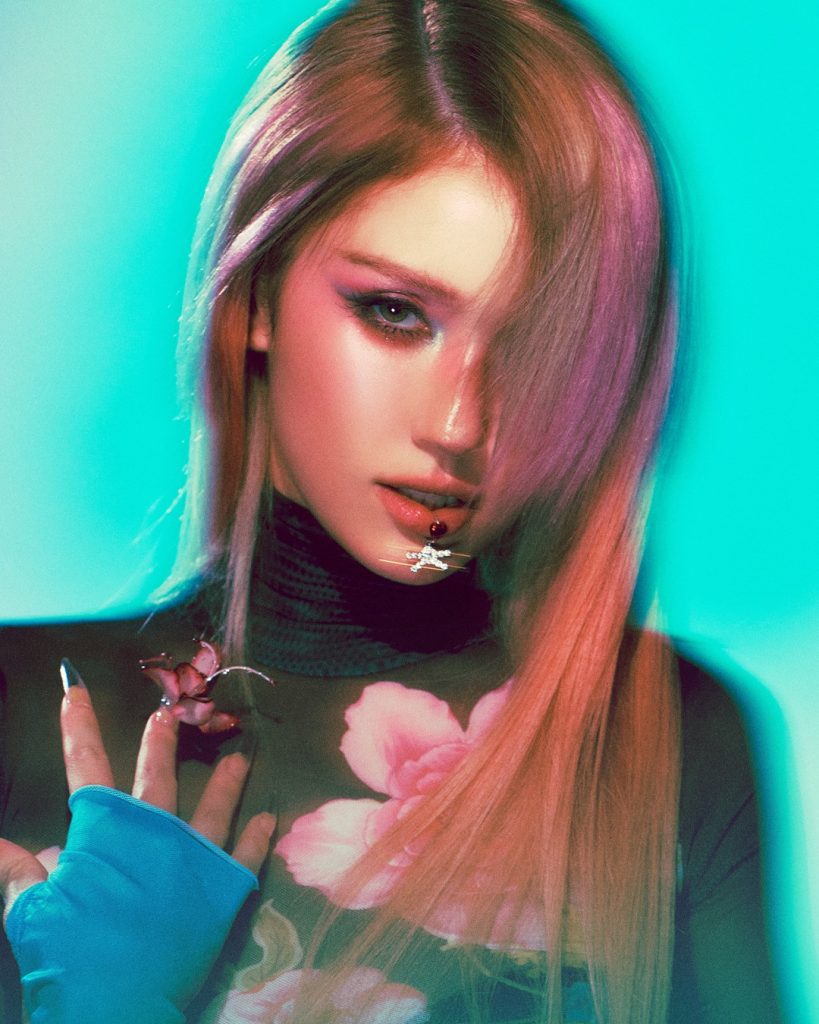
Follow JEON SOMI:
INSTAGRAM | TIKTOK | FACEBOOK | TWITTER
About JEON SOMI
Born as Ennik Somi Douma in 2001 in Ontario, Canada, JEON SOMI grew up in Seoul, South Korea. After several commercial ventures, JEON SOMI ultimately became known after winning Produce 101, a South Korean TV singing competition, and subsequently became part of the project girl group I.O.I. After winning first place on Korean reality singing competition Produce 101, the young musician joined THEBLACKLABEL and began her musical partnership with producer TEDDY.
JEON SOMI released her first full-length album “XOXO” with the single “Dumb Dumb” achieving 20M views in just 2 days and breaking into the Billboard 200. Her second single, also titled “XOXO” has surpassed 100M views in less than a month and cemented JEON SOMI as one of the top solo female artists of this generation. In Summer 2023, she released her brand-new EP entitled “GAME PLAN” along with the music video for “Fast Forward” which has amassed over 80M views and was the #1 Trending Music Videos Worldwide for 3 days.
Currently just 24 years young, JEON SOMI has garnered the attention of major global brands such as Prada, Louis Vuitton, L’OReal, The North Face & Lacoste while also producing her own line of makeup products called, ‘GLYF‘.
#JEONSOMI #THEBLACKLABEL #ChaoticandConfused #kcrush #newalbum #EnnikSomiDouma #Canada #kpop #CLOSER #Escapade #EXTRA #DELU #TEDDY #Vince #JesseBluu #Dominsuk #kcrushamerica #kcrushmagazine #kpopidol #kidol #koreankpop #koreanfashion #newEP #storytelling #selfdiscovery #JEONSOMINewEP
Once reigning as one of K-pop’s first global girl groups, Wonder Girls captured hearts with their catchy hits like “Nobody”, “Tell Me”, and “So Hot.” This iconic five-member girl group under JYP Entertainment, left a lasting legacy as K-pop pioneers who broke into the US market and defined the 2000s K-pop girl group era. From their debut in 2007 to their disbandment in 2017, the members have each followed unique paths in music, acting, and beyond. But where are they now, almost a decade after their disbandment? Here’s a look at each member’s journey since the Wonder Girls era.
1. Sunye (Min Sun Ye)
Former leader and main vocalist of Wonder Girls, Sunye, left the group in 2013 to focus on her family and faith. Sunye is a proud mother of 3 girls. Despite having opted out of the limelight, Sunye has still remained active in the industry including participating in “Mama The Idol” (2021) reality show. She released the “Genuine” solo debut album in 2022 and has performed in several musicals including “Dream High” (2025).
2. Yenny (Park Ye Eun)
Yenny was known for her unique voice and songwriting skills. After Wonder Girls disbanded in 2017, she pursued a solo music career with the “Through the Sky” and “Cross Country” soundtrack singles for ‘Cross Country’ (2017) travel series. Yenny continues to write and produce music as a solo artist, releasing singles like “Summertime” (2021) ad albums like “Left” (2022). Yenny is appreciated by fans for her authentic artistry and strong creative identity.
3. Sunmi (Lee Sun Mi)
Sunmi is arguably the most high-profile member post-Wonder Girls. After leaving the group in 2010 and returning in 2015 for their final years, she launched a very successful solo career. Sunmi is a top solo artist in K-pop, known for hits like “Gashina” (2017), “Heroine” (2018), and “Gotta Go” (2020). She is celebrated for her charismatic stage presence and experimental concepts. Sunmi has had successful collaborations, including with J.Y. Park, and has performed globally, including the “2022 Sunmi Tour” held across Europe and America.
4. Hyerim (Woo Hye Rim)
Hyerim joined Wonder Girls in 2010, replacing Sunmi during her hiatus. After the group disbanded, she stayed in the entertainment industry but moved away from the idol spotlight. Hyerim is now a mother of 2. Hyerim also ventured into acting and appeared on dramas like “Hello Stranger” (2018) and participated in “King of Mask Singer” (2020) music show.
5. Yubin (Kim Yu Bin)
Yubin joined Wonder Girls as Hyuna’s replacement and quickly became known for her rapping skills and strong stage presence. Since Wonder Girls ended activities, she has pursued a solo career with the “City Woman” (2018) mini-album followed by the viral “Thank You My Love” (2018) track. Yubin has also worked with JYP artists and other rappers and featured on various soundtracks. Yubin founded her music label, RRR Entertainment in February 2020, which also signed fellow former Winder Girls member Hyerim for a season. Yubin also competed on King of Mask Singer 2021 music show and in various television shows including “Last Survivor” (2022) and “Dating is Straight” (2022).
6. Sohee (Ahn So Hee)
Though Sohee left Wonder Girls in 2013 to pursue acting, she was a beloved member known for her visuals and charm. Sohee is now a successful actress starring in various Korean dramas such as “Train to Busan” (2016), “The Daechi Scandal” (2024), and “Thirty-Nine” (2022). She has steadily built a reputation as a talented actress beyond her idol roots and continues to expand her career in acting.
Though officially disbanded since 2017, Wonder Girls left an indelible mark on K-pop’s history. Their pioneering efforts paved the way for Korean acts in the US and globally. Fans continue to cherish their music and eagerly follow their individual journeys. Whether on stage, in the studio, or on screen, the Wonder Girls members keep shining—each in their own unique way.
—-Karen Mwenda
#WONDERGIRLS #kpophistory #WonderGirlsMembers #WonderGirlsWhereAreTheyNow #kcrush #kpop #kidol #koreanactress #kpopactress #kcrushmagazine #kcrushamerica #Nobody #TellMe #MinSunYe #Sunye #SoHot #ParkYeEun #Yenny #MamaTheIdol #KingofMaskSinger #DreamHighthemusical #LeeSunMi #Sunmi #Gashina #GottaGo #WooHyeRim #Hyerim #KimYuBin #Yubin #RRREntertainment #AhnSoHee #Sohee #kpoppioneers #kpopfans #hallyu #WonderGirls
 See Trailer
See Trailer“KPOPPED” premieres globally on August 29, 2025 on Apple TV+.
Apple TV+ debuted the trailer for the highly anticipated eight-part song battle series “KPOPPED,” starring PSY, the international chart-topper who helped bring K-pop to the world with his global sensation “Gangnam Style,” and three-time Grammy Award-winning superstar and executive producer Megan Thee Stallion. From executive producers Lionel Richie and Miky Lee, the show brings together some of the biggest names in Western music and top K-pop idols for unexpected, high-energy reinterpretations of iconic hits. All episodes of “KPOPPED” are set to debut globally on Friday, August 29 on Apple TV+.
Hosted by actor and comedian Soojeong Son (“Servant,” “Search Party”), each episode finds Western chart-toppers teaming up with celebrated K-pop groups to reimagine one of their biggest songs, culminating in bold, collaborative stage performances. With just a short window to rehearse, these genre-bending partners deliver electrifying renditions for a live audience in Seoul, who vote for the standout “K-popped” performance of the night. After the song battle winner is determined, the K-pop idols close out the episode with an exciting performance.
Featured artists include:
K-pop acts: Billlie, ITZY, Kep1er, JO1, ATEEZ, STAYC, Kiss of Life and BLACKSWAN
Western artists: Megan Thee Stallion, Patti LaBelle, Spice Girls’ Mel B and Emma Bunton, Vanilla Ice, Taylor Dayne, Kesha, Eve, J Balvin, Kylie Minogue, TLC, Boy George, Jess Glynne, Ava Max and Boyz II Men
These legendary and rising artists trade stages and styles across eight episodes, offering a fresh spin on hit tracks including “Savage,” “Wannabe,” “Ice Ice Baby,” “Lady Marmalade,” “Can’t Get You Out of My Head,” “Motownphilly,” “Waterfalls” and more.
Some Episode highlights include:
| Western Artists | K-pop Artists | Notable Tracks | Episode |
| Megan Thee Stallion, Patti LaBelle
|
Billlie “flipp!ng a coin” |
“Savage,” “Lady Marmalade” |
1
|
| Mel B, Emma Bunton (Spice Girls) |
ITZY “Gold” |
“Wannabe,” “Say You’ll Be There” |
2
|
The series is executive produced by Moira Ross, Lionel Richie, Miky Lee, Megan Thee Stallion and Greg Foster, alongside Harry H.K. Shin and Jake Hong, with producer Ki-woong Kim for CJ ENM Co., Ltd., with its unparalleled expertise in music variety shows and content production. Chris Culvenor, Paul Franklin, Wes Dening and David Tibballs executive produce for Eureka Productions (a Fremantle company), alongside Bruce Eskowitz.
Apple TV+ offers premium, compelling drama and comedy series, feature films, groundbreaking documentaries, and kids and family entertainment, and is available to watch across all your favorite screens. After its launch on November 1, 2019, Apple TV+ became the first all-original streaming service to launch around the world, and has premiered more original hits and received more award recognitions faster than any other streaming service in its debut. To date, Apple Original films, documentaries and series have earned 580 wins and 2,787 award nominations and counting, including multi-Emmy Award-winning comedy “Ted Lasso” and historic Oscar Best Picture winner “CODA.”
About Apple TV+
Apple TV+ is available on the Apple TV app in over 100 countries and regions, on over 1 billion screens, including iPhone, iPad, Apple TV, Apple Vision Pro, Mac, popular smart TVs from Samsung, LG, Sony, VIZIO, TCL and others, Roku and Amazon Fire TV devices, Chromecast with Google TV, PlayStation and Xbox gaming consoles, and at tv.apple.com, for $9.99 per month with a seven-day free trial for new subscribers. For a limited time, customers who purchase and activate a new iPhone, iPad, Apple TV, Mac or iPod touch can enjoy three months of Apple TV+ for free.*
For more information, see the full list of supported devices.
*Special offer is good for three months after the first activation of the eligible device. One offer per Family Sharing group. Plans automatically renew until cancelled. Other restrictions and terms apply; visit apple.com/promo for more information.
Noise opens with a young woman, Ju-hee (Han Soo-a) staring with widened terror filled eyes at the ceiling above her. Her breathing is erratic and her movements distressed. She screams to her neighbors above her to stop making so much noise, begging them for silence and peace. Ju-hee is overcome with panic as the eerie distorted sounds emanating from the walls seem to close in on her, and the screen fades to black.
(Photo courtesy of Finecut Co., Ltd.)
Next we’re introduced to another, slightly older young woman working on the processing line of a busy factory. She’s tapped on the shoulder by her supervisor who gestures that she has a phone call waiting. As she nods her head in acknowledgement and walks off the factory floor, she places a small device in her ear, and as the audio is filled with the racketing cacophony of dozens of machines working in tandem, you realise that she’s the only person not wearing noise canceling headphones.
The young woman, Joo-young (Lee Sun-bin) is told that her sister, Ju-hee hasn’t been seen by her sister’s boyfriend Ki-hoon (Kim Min-suk) for days and he’s worried. When Joo-young enters the apartment she bought with Ju-hee, but strangely doesn’t seem to spend much time in, the room is dark and you even get the sense there’s a musky, decaying odor permeating in the air (which kudos to the production team for translating that so well). On the ceiling and walls dozens of black soundproofing mats have been stuck, and a fine layer of dust covers various surfaces.
As Joo-young searches through the rooms she finds signs of disarray, as through Ju-hee tossed things around in frustration. On the dining table sits a cake with spots of green mold and frosting wishing Joo-young happy birthday, and a container of congealed japchae. Each new revelation of a piece of Ju-hee’s life indicates that something is drastically wrong, and it starts to become evident that the sisters may not have been as close as they once were.
Joo-young finds her sister’s phone on which are dozens of audio recordings of Ju-hee screaming at night terrors that only she’s able to see and hear. Also on the table is another hearing aid, but this one belongs to Ju-hee. Out of curiosity and perhaps hope that it could provide an answer to what happened, Joo-young places the device in her ear and is met with screeching distorted screams and weird sounds that raise the hair on your arms. Sounds, noises that the audience isn’t hearing when Joo-young isn’t wearing it.
There’s many scenes and sequences like this throughout the film where director Kim Soo-jin places the audiences in the position of Joo-young, and at times Ju-hee. We hear what they’re able to hear with and without the devices, providing a perspective of deaf and hard of hearing characters not often done in film. Other films where this is done excellently is the 2019 Oscar winning film The Sound of Metal by Darius Marder, and more recently the 2025 coming of age feature The Way We Talk by Hong Kong filmmaker Adam Wong.
(Photo curtesy of Finecut Co., Ltd.)
Desperate to find her sister, Joo-young goes to the apartment building’s management office to inquire about her missing sister, but there she’s met with apathy and even annoyance tinged with aggression from the supervisor and security guard. She’s told that her sister isn’t a priority because they’re more interested in the new development deal being made.
At the police station, the officers treat Joo-young more with suspicion about her own movements than interest and concern for the missing young woman’s wellbeing. When speaking with Ju-hee neighbours no one seems to know anything about her and express their ire at being inconvenienced having to answer questions from a stranger and what negative effects a police investigation could have for the development deal. This selfishness is a repeated theme in Noise, a horror film set in an apartment building where every little sound made is a reminder that we’re not living alone.
It’s interesting that Soo-jin uses noise not only as a method of torment for our two female lead characters, but also as a narrative device to address the increasing culture of individualism in South Korea, and I think by extension the world. He makes it a point to show how times have changed from neighbours congregating to talk with each other about the random happenings in their homes, communities, and society, to aimlessly moving around each other, moving through life like ghosts who have no interest in the lives of the people they’re sharing so much of their space and time with.
The noises being made outside the apartment building don’t come from children playing or old people gossiping and having fun playing their own traditional games. The noises come from traffic, the constant sound of construction, and the distorted feedback of a microphone being spoken into at a meeting to discuss the tenants holding out on agreeing to having their homes torn down.
Another way that Soo-jin references the growing distance between people is the use of apartment numbers to identify each other. Ju-hee is referred to by her unit number, 604, in her recordings she speaks about being disturbed by the never ending noise from 704, and Joo-young has her own terrifying encounters with the downstairs neighbour, 504. No one seems to know anyone’s name or cares to use them anymore.
What makes Noise work as a true horror film isn’t just the truly unnerving sound design by Park Young, ki, the creepy production design Ko Seung-hyo, it’s the terrific performances by Lee Sun-bin (Sumbisori), Han Soo-a (Penthouse), and Ryu Kyung-soo (Broker) as increasingly obsessed tenant 504 with whom both sisters have terrifying encounters that no one else seems to hear, see, or care about.
Following up her performance in Sumbisori with Noise, Lee shows her acting chops and flexibility by playing characters of completely disparate experiences and personalities. The journey she and Soo-bin take Joo-young on is impressive and in some ways heart breaking with an end that deserves not to be spoiled because the film offers one of my favourite plot twists– and use of a cellphone app–of the year
Noise had its North American premiere at the 2025 Fantasia International Film Festival in the Selection 2025 program. It was an Official Selection at the SITGES – International Fantastic Film Festival of Catalonia 2024, KOSMORAMA Trondheim International Film Festival 2025, and Florence Korea Film Festival 2025.
(Photo courtesy of Finecut Co., Ltd.)
In my interview with Soo-jin during Fantasia, he spoke about carefully selecting his lead actresses for their ability to convey all of the intense emotions their characters experienced, making Ju-hee and Joo-young’s disability and integral part of the narrative, and working with cinematographer Jun Hong-kyu, composer Heo Jun-hyeok, and sound designer Park Young-ki to create the film’s visually and auditorially oppressive atmosphere.
Carolyn Hinds
Freelance Film Critic, Journalist, Podcaster & YouTuber
African American Film Critics Association Member, Tomatometer-Approved Critic
Host & Producer Carolyn Talks…, and So Here’s What Happened! Podcast
Bylines at Authory.com/CarolynHinds
Twitter & Instagram: @CarrieCnh12
#NOISE #FantasiaIFF2025KCrushInterviewwithKimSoojin #filmmaker #kcrush #filmscreening #filmcoverage #filmreview #kcrushamerica #kcrushmagazine #KimSoojin #JunHongkyu #cinematographer #composerHeoJunhyeok #ParkYoungkisounddesigner #horrorfilm #eardevice #hearingsounds #hardofhearing #neighborsdisconnection #nolongerknowingneighbors #knownbyapartmentnumbers #KoreanhorrorfilmatFantasiaIFF2025 #noiseinourhomes
Looking for the perfect k-dramas to binge on this August? Whether you are craving heart-fluttering moments, rime-travel, riveting fantasy, or a unique twist of royalty, these 5 k-dramas will keep you hooked.
1. My Lovely Journey
Launching in August 2, 2025, ‘My Lovely Journey’ k-drama follows Kang Yeo Reum, a former idol turned travel reporter who hides quiet anxiety beneath her cheerful image. While producing a travel segment, she meets Lee Yeon Seok, a former engineer chasing his dream of becoming a filmmaker. As they collaborate on requested trips, both begin to rediscover their purpose. Through strangers’ stories and faraway places, Yeo Reum learns that true success isn’t fame—but finding joy, healing, and meaning in the unexpected roads we take.
2. Love, Take Two
Premiering on August 4, 2025, ‘Love, Take Two’ drama revolves around Lee Ji An, a tough, no-nonsense construction manager and proud single mom. Her world shifts when her once-studious medical‑student daughter begins acting out—just as Ji An’s old flame, Ryu Jeon Seok, reappears. Now a single dad with a flower-farming son, Ryu Jeon Seok’s peaceful life is turned upside down when both women crash into it—literally. What follows is a heartwarming, cross-generational story of rekindled love, family tension, and second chances that bloom where least expected.
3. Our Golden Days
‘Our Golden Days’ k-drama will be premiering on August 9, 2025. Lee Ji Hyeok seems to have it all—success, confidence, and charm—but a sudden personal setback forces him to reevaluate his life and priorities. Ji Eun Oh, a passionate café manager and interior designer, once had unrequited feelings for him and remains his emotional anchor. Meanwhile, Park Sung Jae, a wealthy friend torn between loyalty and hidden longing, complicates their connection. As the lives of three generations converge, they navigate love, regret, and healing together.
4. Twelve
Debuting on August 23, 2025, ‘Twelve’ is a high-stakes fantasy-action drama that follows 12 celestial angels, each tied to a Chinese zodiac animal and live disguised among humans to protect Korea. Ages ago, they sacrificed to seal destructive evil. When Oh Gwi, a crow-embodied demon who failed to become an angel, reawakens, the weary leader Tae San must rally his remaining comrades—clever strategists, fierce healers, and agile fighters—for a final, mythic battle to save humanity.
5. Bon Appétit, Your Majesty
Launching on August 23 2025, ‘Bon Appétit, Your Majesty’ k-drama revolves around Yeon Ji Yeong, a French-trained chef at the peak of her career, who suddenly finds herself transported back 500 years to Joseon dynasty. She is thrust into the royal kitchen of King Lee Heon, a fearsome tyrant with an extraordinary palate. Tasked with creating fusion dishes that satisfy his exacting tastes, Ji Yeong’s cooking begins to soften the king’s icy heart. But court intrigue intensifies with ambitious concubine Kang Mok Ju and politically opportunistic Prince Je Seon watching her every move.
—-Karen Mwenda
#August2025Kdramastowatch #5kdramastowatchthisAugust2025 #kcrush #kdrama #BonAppetitYourMajesty #Joseondynasty #Twelve #OurGoldenDays #LoveTakeTwo #MyLovelyJourney #kcrushamerica #kcrushmagazine #koreanculture #koreanhistory #kculture #koreanfashion #newkdrama #upcomingkdrama2025 #koreandrama
The rise of plus-size fashion in Korea isn’t just a fashion moment—it’s a cultural shift. While there’s still progress to be made in representation, 2025 shows potential for significant visibility to curvier bodies in a society long dominated by narrow beauty ideals—with style, with pride, and with softness that doesn’t need to shout to be heard. A new wave of inclusive designers, body-positive influencers, and fashion-forward brands are reshaping the image of Korean fashion—and it’s bigger, bolder, and more beautiful than ever. Here are some plus-size Korean fashion styles that aren’t just following the mainstream, but setting the tone.
1. The Rise of the Beige Aesthetic
2025 is the year of subtlety. Korean fashion has turned to earthy, neutral tones like beige, oat, soft camel, and cream. On plus-size bodies, these hues are more than flattering—they’re empowering. Layered beige looks, oversized knitwear, wide-leg trousers, and minimal accessories create a sophisticated palette that feels effortlessly Korean. Think timeless cuts in linen or cotton blends, monochrome outfits with textured depth, and longline jackets over flowy pants.
2. Layering as a Statement
Korean layering has always been artful, but 2025’s plus-size scene is elevating it to new heights. Instead of hiding the body, layering now highlights it—with intentional volume, proportion, and movement. From cropped jackets over flowy midi dresses to structured button-downs layered under knit vests, plus-size styling is now about shape—not size. Even oversized button shirts paired with bike shorts or A-line skirts add a dynamic blend of comfort and style. Layering isn’t just practical—it’s political. It says, “My body deserves fashion that moves with me and speaks for me.”
3. Soft Edge Street Feminine
The 2020s E-girl aesthetic has evolved to a softer, more wearable version has taken hold. The look blends streetwear staples with ultra-feminine pieces for an edgy-yet-soft visual statement. For plus-size fashionistas, this means pairing graphic oversized tees with pleated skirts, adding lace sleeves to bomber jackets, or throwing a chunky cardigan over a crop top. It’s a mix of K-hip-hop grit and soft 2000’s era nostalgia—and it’s just as bold on a 2XL frame as it is on an XS one. An example look would be wide-leg denim with corset-inspired tops, satin midi skirts with thick-soled sneakers, and soft blush or pastel hair tints.
4. Modern Hanbok Influences
One of the most elegant developments in 2025 Korean fashion is the integration of traditional hanbok silhouettes into everyday plus-size wear. Korean designers are embracing cultural identity through wrap tops, bell sleeves, high-waisted skirts, and flowy fabrics that celebrate form and history. The modern hanbok-inspired look is ideal for plus-size bodies, offering breathable comfort and striking silhouettes. Wrap dresses and tie blouses help define the waist without constriction, while A-line skirts float with movement rather than cling. Most people are going for soft pastel palettes, natural materials, and simple embroidery accents.
Voices Leading the Way & Where to Shop
In Korea and beyond, plus-size fashion influencers are taking control of the narrative. These voices are helping redefine beauty standards and showing that Korean fashion has no size limit. One of the influencers to watch in 2025 include @ssunbiki – a model and influencer breaking barriers in body positivity. There are various Korean and Korean-inspired brands offering extended sizing or specifically cater to plus-size bodies. 09Women is Korea’s pioneering plus-size fashion brand. JStyle is a modern basics and office wear. Romi Story is a soft feminine styles and wide range of seasonal items. 66girls is a budget-friendly oversized fits. YESSTYLE is an international shipping and access to Korean-style plus options.
—-Karen Mwenda
#2025PlusSizeKoreanFashion #plussize #JStyle #kcrush #kfashion #koreanFashion #YesStyle #ssunbiki #09Women #kcrushamerica #kcrushmagazine #RomiStory #66girls #wraptops #bellsleeves #highwaist #widelegdenim #alineskirts #cardiancroptop #bodypositive #layeredbeigelook #koreanculture #selfempower #confidence #koreaninfluencer #oversizedknitwear #khiphopgrit #SamSam #plusfashion #kplusfashion #plustrend
JAPAN 1ST DIGITAL SINGLE SELECTED AS THE THEME SONG FOR KAO’S LATEST PRODUCT LAUNCH–WITH MEOVV AS OFFICIAL BRAND AMBASSADORS
LISTEN HERE WATCH HERE
MEOVV unveiled their highly anticipated EP MY EYES OPEN VVIDE last May, delivering an intimate yet versatile collection that resonated with fans worldwide, peaking at #4 on Billboard’s World Albums Chart. The single “HANDS UP” has surpassed 50 million views on YouTube, while dance challenge videos set to the group’s music have gone viral on Japanese social media, drawing widespread attention. They have now returned with their 1st Japanese digital single, “ME ME ME,” marking their official debut in Japan. Listen HERE. Watch HERE.
The vibrant, infectious, and irresistibly danceable track is an instant summer anthem that opens with dramatic strings before bursting into a fast-paced, upbeat rhythm. “ME ME ME” has also been selected as the theme song for Kao’snew hair care brand, MEMEME, with MEOVV serving as the brand’s official ambassadors. This exciting foray into the Japanese market is sure to make waves this summer.
Watch CM video of Kao “MEMEME”: http://youtube.com/watch?v=fpTJoFGe1aA
Photo Credit: (c) 2025 UNIVERSAL MUSIC LLC
FOLLOW MEOVV
TikTok | Instagram | X | Threads | YouTube | Facebook
About MEOVV:
Fierce, feverishly buzzing, and fabulously chic, MEOVV are clawing their way to the top of K-Pop’s new generation. Pronounced “meow,” the multinational quintet — SOOIN, GAWON, ANNA, NARIN, and ELLA — is the debut girl group from THEBLACKLABEL, creatively led by label founder/mega-producer Teddy “TEDDY” Park (BIGBANG, G–Dragon, 2NE1, BLACKPINK).
MEOVV have lived up to that lineage from their first single, “MEOW,” a bilingual pop anthem that earned 5.1M global streams on week one, roared onto Billboard’s World Digital Song Sales chart (No. 10), and whose video logged over 10 million YouTube views in 48 hours. Then came “BODY” — a warning to rivals complete with signature cat-claw choreo — and the R&B-infused “TOXIC,” revealing the group’s emotional side and incredible vocal range. Just three months after their debut, MEOVV displayed stage presence beyond their years at 2024’s MAMA Awards in Osaka, and took home the award for “Favorite Rising Artist.”
Standing for “My Eyes Open Wide,” MEOVV embodies the dynamism and authenticity of young stars in control of their artistry. The group’s members (who are already racking up writing credits) hail from South Korea, the US, and Japan, and possess both unique identities and an indestructible bond. Together they present a duality that’s at times razor sharp, at others effortlessly smooth, while they break down barriers and actualize their dreams. Armed with sweetly savage charms, MEOVV is pointedly yet softly piercing through hearts.
About THEBLACKLABEL:
THEBLACKLABEL is a South Korean entertainment company, record label, and creative agency founded by TEDDY in 2016 and home to acts such as TAEYANG, JEON SOMI, ROSÉ, Vince and ALLDAY PROJECT.
#MEOVV #THEBLACKLABEL #TEDDY #kcrush #MEMEME #Japanesesingle #newmusic #kpop #koreanpop #MEVVMEMEME #kcrushamerica #kcrushmagazine #SOOIN #GAWON #ANNA #NARIN #ELLA #newgen #kidol #multinationalquintet #fabulouslychic #TeddyPark #newgenerationofkpop #koreanentertainment #MAMAAwards2024 #MyEYESOPENWIDE
The year 2025 has been marked by an overwhelming sense of grief in the Korean entertainment world. The sorrow began early with the heartbreaking deaths of veteran actor Lee Yoon Hee, beloved singer Song Dae Kwan, and actress Kim Sae Ron, whose passing at just 24 years old left fans stunned. Tragedy deepened in March when the nation mourned the loss of Wheesung, a revered R&B vocalist whose smooth voice and emotional depth had touched generations. Yet even after March, the industry continued to say goodbye to cherished talents, from rising stars to legendary figures. In this article, we honor the lives and legacies of those we lost after March, reflecting on the artistry, impact, and memories they leave behind.
 Choi Jung Woo
Choi Jung Woo
Actor Choi Jung Woo passed away on May 27, 2025 at the age of 68. A beloved face in the world of Korean dramas, Choi Jung-woo brought depth and warmth to every supporting role he played. With notable appearances in Quiz of God, Dr. Frost, and Standby, he embodied the kind of seasoned grace that anchors a production. His calm delivery and fatherly screen presence made him a go-to actor for roles requiring gravitas. Choi Jung Woo left behind decades of performances that helped define the golden age of K-drama. In the tributes, a fellow actor tributed Jung Woo as a true professional, a pillar of stability on every set.
Lee Seo Yi
Actress Lee Seo Yi passed away on June 20, 2025 at the age of 43. Known for her roles in Cheongdam-dong Scandal and The Divorce Insurance, Lee Seo Yi (born Song Soo Yeon) passed away suddenly in late June, leaving fans and colleagues in shock. She was praised for her emotional range and ability to portray complex women on screen. Though the cause of death was not publicly disclosed, her final social media posts revealed a soul grappling with pain — now immortalized in heartfelt fan tributes. Lee Seo Yi’s memorial wall was filled with heartwarming tributes including one that said, “She made the ordinary feel powerful. She made us feel seen.”
Shim Jaehyun
Former F.ABLE member Jaehyun passed away on June 29, 2025 at the age of 23. Shim Jaehyun, once a rising star as part of the boy group F.ABLE, passed away following a long, private battle with leukemia. His death was announced on July 2, shaking fans who had no idea of his condition. Jaehyun was known for his gentle demeanor, powerful vocals, and radiant smile. His bravery in facing illness away from the spotlight is now seen as a quiet act of strength and humility. Among millions of fan tributes was one that said, “He was always smiling — even when he had every reason not to”.
Kang Seo Ha
Actress Kang Seo Ha passed away on July 13, 2025 at the age of 31. Kang Seo Ha’s career was just beginning to blossom, with recent performances in In the Net and Mangnaein earning critical praise. Sadly, she passed away due to stomach cancer, a battle she fought privately. Her death sparked conversations on the pressures young actors face and the toll it takes on health. Known for her soft-spoken charm and emotional intelligence on screen, Kang’s absence is deeply felt among rising stars. An industry columnist tributed the late actress asserting that her presence lingered long after the credits rolled.
As we look back on the immense talent we have lost, we’re reminded that the people behind the music, dramas, and performances are more than entertainers — they are storytellers, dreamers, and voices that shaped lives across continents. Whether through a song that comforted a lonely heart or a scene that made someone believe in hope again, each of these artists gave us a piece of themselves. While their time with us was cut far too short, their light lives on in the hearts of fans.
—-Karen Mwenda
#GoneButNotForgotten #KpopKDramaStarsLostInEarly2025 #kcrush #koreanactor #koreanactress #kdrama #kpop #passedaway #condolences #kcrushamerica #kcrushmagazine #KangSeoHa #ShimJaehyun #FABLE #LeeSeoYi #ChoiJungWoo #koreanentertainer #korean #koreanculture #sympathy #honoringstarslost #whopassedawayin2025 #love #knews
The lights go down. The auditorium hushes with a palpable low hum of anticipation. As the sound of “숨 Breath”—the opening instrumental track on WRLD, the latest album from South Korean indie rock band The Rose begins to play— plays through the giant speakers hanging overhead, images of stars and whorls of fancy drift across the black backdrop above the stage, and a woman’s voice begins narrating a story about a boy making wishes to the endless sky and the stars hanging high up above glow like a memory.
He pictures a train in the clouds, and as the wind steals his breath, in a single leap, the boy boards this train of wishes, dreams, and hope, and so begins The Rose’s fantastic performance for the Toronto leg of their 2025 ‘Once Upon a World’ Tour.
I think when it comes to choosing a name for a band, things can get pretty tricky. Either members lean into the absurd and tongue-in-cheek, or they become earnest and think about what their name means and the image it evokes for their fans. And after seeing The Rose perform live for the first time (finally!) on July 10th, at the Great Canadian Casino Resort, in Etobicoke, Canada, I can say that I don’t think they could’ve done better with a simple, singular, perfectly imperfect rose.
Woosung
Not to wax poetic, but the reason I think a rose suits this group of four uber talented men. Depending on the variety, roses can be tricky to grow because they require the right soil conditions, the correct amount of sunlight, water, and nutrients. And while they can be finicky to figure out at first, once they’ve become firmly rooted, and the correct conditions for growth are achieved, boy is it all worth it, thorns and all. They come in all sorts of vibrant colours, sizes, scents, and varieties that you can’t help but take a minute to stop and appreciate them. The phrase “Stop and smell the roses.” exists for a reason.
I think this perfectly encapsulates the band; Woosung, Hajoon, Dojoon, and Jaeyeong, who began busking in front of shifting crowds on the narrow bustling streets of Hongdae in Seoul, came together to officially debut in 2017 and grew into a band that’s weathered all sorts of uncertain times and difficult situations, forming Winfall (in homage of the original band comprising of Jaehyeong, Dojoon, and Hajoon) their own record label in 2022, that firmly knows who they are, their sound, and what message they want their music to convey. With each album, they experiment with new genres and eras ranging from Blues, jazz, and alt rock and pop from the 80s, 90s, and 2000s, combining traditional rock music, with lyrics that demonstrate how their outlook on life evolves over time.
As the opening narration of the story about a boy who wished upon a star ends, the band entered the stage, and after a brief hiccup that caused laughter to ripple across the audience, they open with acoustic chords to “Ticket to the Sky”, and Woosung’s smooth voice with its unique hint of rasp and lilt fills the theatre. The lights go up to just the four sitting on tall chairs, creating an unexpectedly intimate atmosphere. He takes turns with Dojoon singing the verses and choruses, with an ease that both relaxes and builds anticipation. This sets the tone for the entire two-hour concert.
From “Ticket to the Sky” they continue with acoustic renditions of “Childhood”, the third track from their 2022 album ‘Heal’, the achingly soulful “Definition of Ugly is”, “She’s in the Rain”, one of my personal favourites, and “Tomorrow”. Here they take a brief break for the stage to be reset with the addition of Hajoon’s drum kit, and Dojoon’s brightly painted piano.
As the setting changed, Woosung took the time to introduce each individual member and make lighthearted jokes to lighten the mood, shifting the atmosphere for the next chapter in their performance. His way of speaking to the audience and ensuring each member gets their own moment shows how adept he’s grown at keeping the energy up and making sure everyone stays engaged.
Jaehyung
Once the lights were back on, the change in the songs to those with faster tempos was immediately noticeable with the first intro notes of “Nebula”, the first full track on the tour’s namesake WRLD album. There’s a quality to this section of the concert that feels very nostalgic of early 2000s alt-rock, and it becomes clear that the band is being very intentional with the song order.
The bass of Jaehyung’s playing and Hajoon’s drums drive the tempo steadily through “Lifeline”, “You’re Beautiful” their 2023 hit single, the smooth Jazz & Blues inspired “Shift” and “Slowly”, and the mid-tempo bop “Nauseaous” reminiscent of mid-2000s poprock, with “Yes” closing out the second set.
Hajoon
After another break where the stage goes through a major redesign, transforming it into a bedroom decorated with bookshelves filled with knick-knacks, comfortable chairs, a giant bed smack dab in the middle and a virtual ‘window’ above it where the audience’s eye is directed towards projections of various designs relating to the themes of the song lyrics.
This setting is interesting because it directly refers to the themes of the songs, and also to the privacy of the rooms where the group comes together to write, as Hajoon and Jaehyung mention in their mid-set interaction. The way each member, except for Hajoon who stays seated at his drums, moves across the stage and settles into various locations like the edge of the bed to sing and play their respective instruments (Woosung periodically switched between his acoustic and electric guitars, and Dojoon moved between the piano, playing acoustic guitar, and singing at the standing mic) and interacting with the crowd was very interesting and smart stage direction. It felt like watching a live stage musical instead of a *regular concert.

Before beginning their final and longest set with eleven songs (whew!), they spoke of the different ways they met each other, their time busking in front of shifting crowds on the narrow streets of Hongdae building their repertoire, and finding music to be a form of therapy to aid with healing from the different traumas they experienced and coming to understand that while all traumas can’t be healed 100%, as individuals and a group they can grow and keep moving forward with their music.
The story of a boy growing into a man, falling in love, stumbling through relationships, heartbreak, and disappointment in himself and the people in his life, finding his way to acceptance and determination to be a better person with each successive song, is beautifully executed.
The set begins with the high-energy crowd pleasers “Back To Me” and “Alive,” which gives strong 80s electronica vibes, “RED”, “Sorry”, the first song the band wrote together, followed by their long-awaited post-enlistment rock ballad single “Beauty and the Beast”.
Here the tone mellows out a bit with the contemplative and dare I say socially conscious selections of “Nevermind” which had crown interaction with the lyrics displayed on the stage screen, ‘Wonder”, “Sour”, “Cosmo”, and the concert closed out with “O” a song that asks us to see our differences, accept them and each other for a better world, and to be completely honest, as Woosung lead the audience to sing the final chorus acapella the energy in the auditorium shifted completely.
I don’t know if it was just me, but this entire section had me close to tears because I couldn’t help but think of the genocides and other atrocities happening within our world and as a Black disabled woman, and watching the harm being done to the world by the few with too much power while the many struggle to make it through each day, while all we need to do is “see and accept our differences.”
But still we persevere like a rose bush finding a way to survive in the most unlikely of places and we’re inspired to keep wishing and hoping for better days ahead with the open mindedness of a child. This is the story of The Rose and our world.
Photography by Teresa Valenton
Carolyn Hinds
Freelance Film Critic, Journalist, Podcaster & YouTuber
African American Film Critics Association Member, Tomatometer-Approved Critic
Host & Producer Carolyn Talks…, and So Here’s What Happened! Podcast
Bylines at Authory.com/CarolynHinds
Twitter & Instagram: @CarrieCnh12
#THEROSE #TheRoseOnceUponaWRLDTOUR #kcrush #THEROSEWORLDTOUR #kpop #kidols #kpopindustry #kpopconcert2025 #kcrushamerica #kcrushmagazine #CanadaTour #Woosung #Dojoon #Hajoon #Jaehyung #TheRoseInCanada2025 #BackToMe #Alive #RED #Sorry #BeautyandtheBeast #krock #kband #Koreanrockband #Nevermind #Wonder #Sour #Cosmos #O #finalchorusacapella #highenergy #electronica
Free gelato pop-ups in collaboration with local shops across Los Angeles, New York, Houston, and Chicago Happening on Friday, August 1st!
Listen to “Gelato (Remixes)” Here
Following the viral success of their 2024 release “Just Like Dat feat. JP THE WAVY” and their first U.S. tour, PSYCHIC FEVER FIRST U.S. TOUR 2025, PSYCHIC FEVER continues to elevate their global presence through non-stop releases and international performances.
Recently, the group successfully wrapped up their Japanese 5-city tour, PSYCHIC FEVER LIVE TOUR 2025 “EVOLVE”, and released their original 3rd EP “PSYCHIC FILE III”, marking a new era of evolution for the group. They are currently on their 1st U.S. fan meeting tour “ForEVER CONNECT PCF U.S. FANMEET 2025”.
The international sensation, PSYCHIC FEVER, is back with the remix collection of “Gelato”, a track from “PSYCHIC FILE III”. Each remix corresponds to a ‘flavor’ inspired by the song title, reimagined in a variety of genres by remixers Iimori Masayoshi, A.G.O, audiot909, and ALENOISE. Each of the four remixers delivers a distinct take on the track, resulting in a diverse and flavorful collection.
To celebrate the release of “Gelato (Remixes)”, exclusive fan experiences are activating across four major cities including Los Angeles, New York, Houston, and Chicago with free gelato pop-ups in collaboration with local shops. This special one-day activation will see a limited “remix-flavored” gelatos distributed to lucky fans who make their way to the shops.
Fans can win a free scoop of gelato by using one of the remix sounds on either TikTok, Instagram, or YouTube Shorts, or share the song on Instagram Story as an alternative. The activation will run on Friday, August 1st, from 4pm until 6pm local time. Fans are encouraged to arrive early as quantities are limited and available on a first-come, first-served basis.
Cool off this summer with these refreshing, genre-hopping flavors of “Gelato (Remixes)”!
POP-UP DETAILS
Time: Aug 1 (Fri) 4-6PM (Local Time)
Locations:
- Los Angeles @ Fatamorgana Gelato, Beverly Hills
162 S Beverly Dr, Beverly Hills, CA 90212
https://fmgelato.com/ - New York City @ il laboratorio del gelato
188 Ludlow St, New York, NY 10002
https://www.laboratoriodelgelato.com/ - Chicago @ FRÍO Gelato
1301 Chicago Ave, Evanston, IL 60201
https://www.friogelato.com/ - Houston @SweetCup Gelato & Sorbet Originale
3939 Montrose Boulevard, Suite L Houston, TX 77006
https://www.sweetcupgelato.com/
RELEASE INFORMATION
Release Date: Friday, July 25, 2025
Title: “Gelato (Remixes)”
Streaming & Download: https://psychicfever.lnk.to/GelatoRemixes
TRACKLIST
M1. Gelato (Blueberry Remix)
M2. Gelato (Orange Remix)
M3. Gelato (Matcha Remix)
M4. Gelato (Mango Remix)
M5. Gelato
TRACK DESCRIPTIONS
M1. Blueberry Remix (Latin)
A bold fusion of upbeat rhythms and passionate Latin vibes. Remixed by ALENOISE, this version adds a vibrant spark that instantly transports you to a sunny beach getaway.
M2. Orange Remix (Afrobeats)
A groovy, energetic take by audiot909 that highlights the irresistible bounce of Afrobeats. As refreshing and bright as a juicy orange, this remix bursts with feel-good rhythms.
M3. Matcha Remix (Lofi Hip-Hop)
A chill, warm interpretation by A.G.O that brings out the mellow, introspective side of “Gelato.” With soft textures and subtle layers, it unfolds like a serene cup of matcha. Mixed by Keisuke Mukai.
M4. Mango Remix (Tropical House)
Remixed by Masayoshi Iimori (TREKKIE TRAX), this version blends sweet and breezy Tropical House vibes into a sound that feels like a relaxing resort escape — the perfect summer soundtrack.
REMIXERS
Blueberry Remix: Remix by ALENOISE
Orange Remix: Remix by audiot909
Matcha Remix: Remix by A.G.O / Mixed by Keisuke Mukai
Mango Remix: Remix by Masayoshi Iimori (TREKKIE TRAX)
PREVIOUSLY RELEASED
Release Date: Wednesday, June 18, 2025
Title: “PSYCHIC FILE III”
Streaming & Download: https://psychicfever.lnk.to/PSYCHICFILE3
 ABOUT PSYCHIC FEVER
ABOUT PSYCHIC FEVER
PSYCHIC FEVER is a seven-member boy group consisting of KOKORO, WEESA, TSURUGI, RYOGA, REN, JIMMY, and RYUSHIN. They debuted in July 2022 as the seventh group from “EXILE TRIBE,” an unparalleled Japanese artist collective under LDH JAPAN. The group’s name, PSYCHIC FEVER, was chosen to reflect the unique individual personalities of its seven members, whose performances—featuring dance, vocals, and rap—create a powerful chemistry. Their fanbase is called “ForEVER.” With the purpose of “IGNITE OUR DREAMS,” PSYCHIC FEVER aims to inspire courage in those who watch them, set their hearts ablaze with passion. Since their debut in 2022, they have been actively performing in Japan and throughout Asia, aiming for global success. Their song “Just Like Dat feat. JP THE WAVY,” released in January 2024, gained significant attention both domestically and internationally, surpassing 270 million views on TikTok. It also entered the Viral Top 50 charts on Spotify in nine Asian countries and regions, including Thailand, Vietnam, the Philippines, Singapore, Malaysia, and South Korea, while also becoming a viral hit in the United States. In February 2025, PSYCHIC FEVER successfully held their first U.S. tour, “PSYCHIC FEVER FIRST U.S. TOUR,” in six cities across the United States. That same month, they announced a global contract with Warner Music Group and their transfer to the music label “10K Projects.” In March, they expanded their reach by performing at SXSW 2025, one of the world’s largest music festivals in the U.S. Their global journey is accelerating, and they are expected to make even greater strides in the future.
CONNECT WITH PSYCHIC FEVER: FACEBOOK | X | INSTAGRAM | TIKTOK | YOUTUBE | SPOTIFY
#PSYCHICFEVER #KOKORO #WEESA #TSURUGI #RYOGA #REN #JIMMY #RYSHIN #kcrush #LDHJAPAN #ForEVERfanbase #Jpop #GelatoPop #ForEVERCONNECTPCFUSFANMEET2025 #kcrushamerica #kcrushmagazine #USTour2025 #1stWorldTour #EXILETRIBE #debutedJuly2022 #JustLikeDat #JPTHEWAVY #SXSW2025 #Japaneseartist #PSYCHICFEVERRemixers




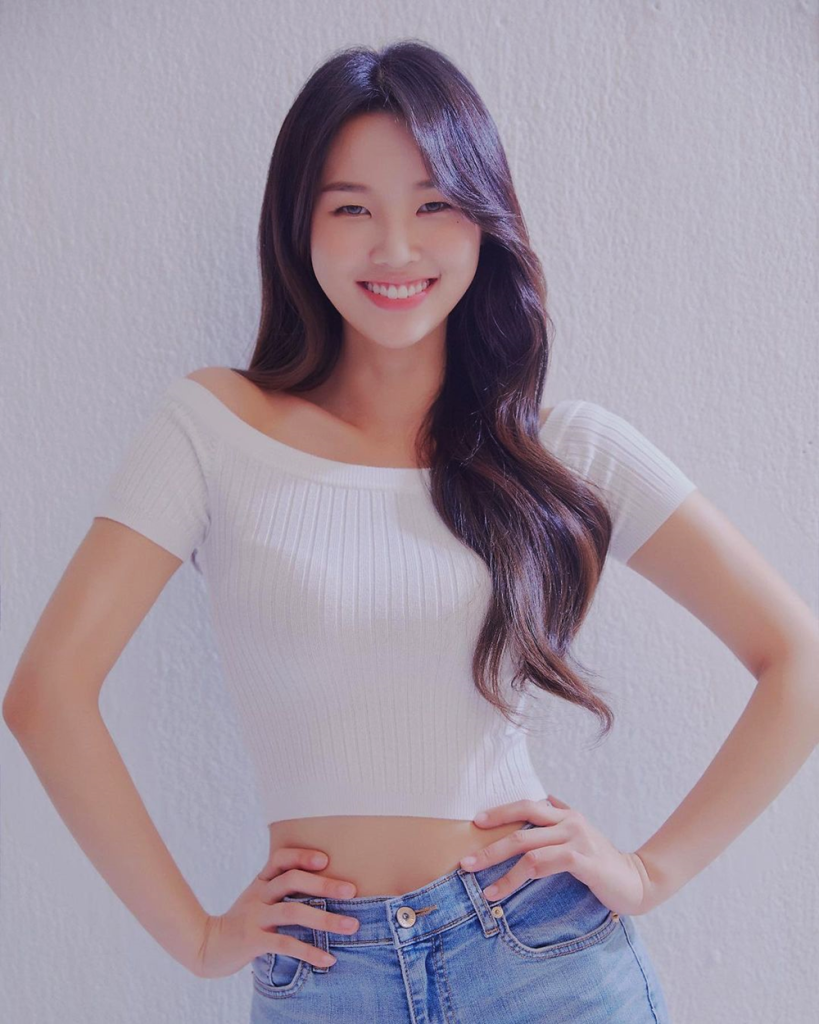


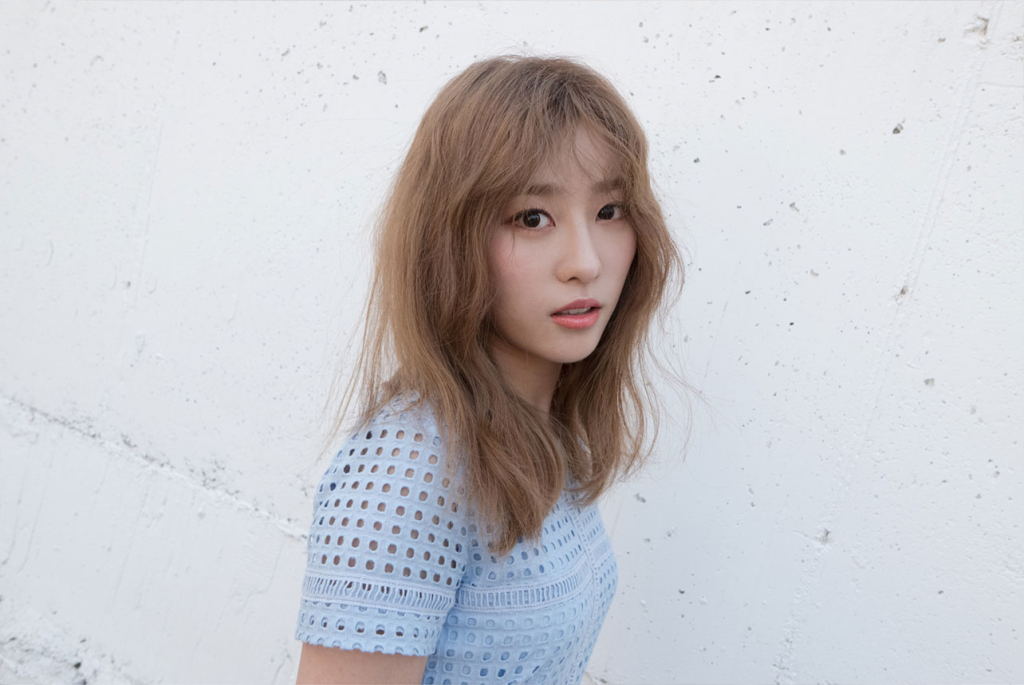




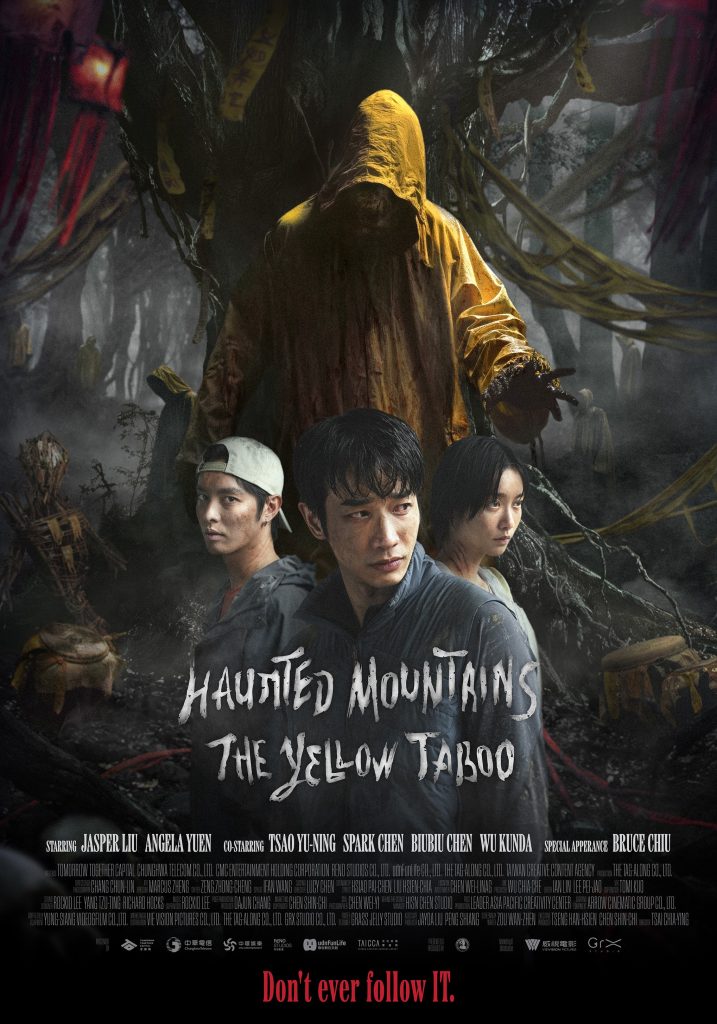


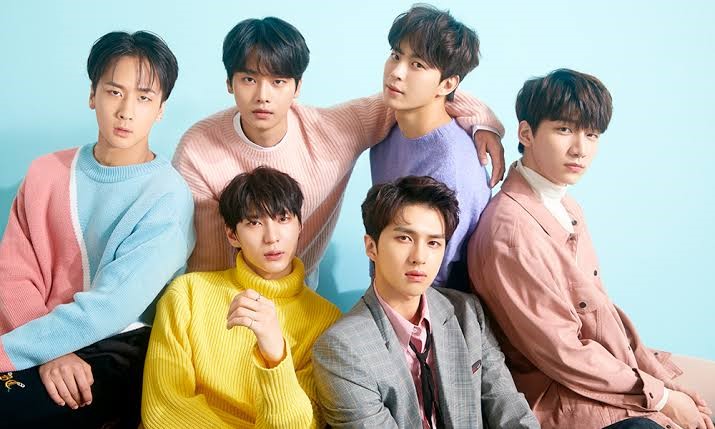
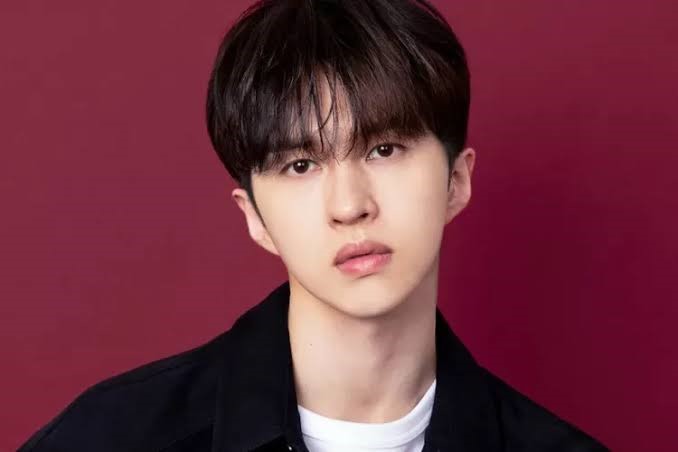

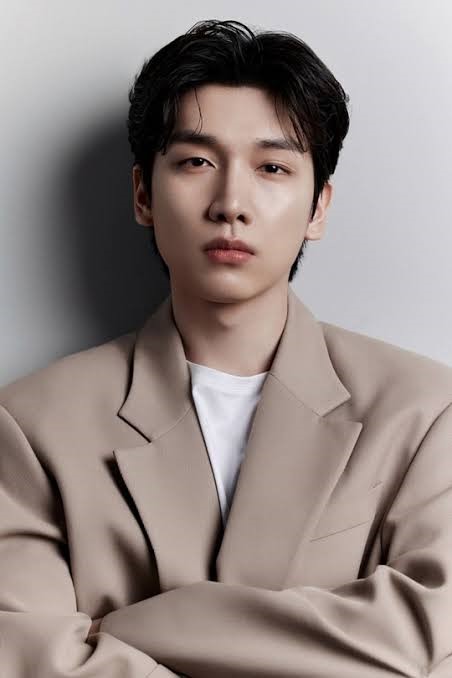
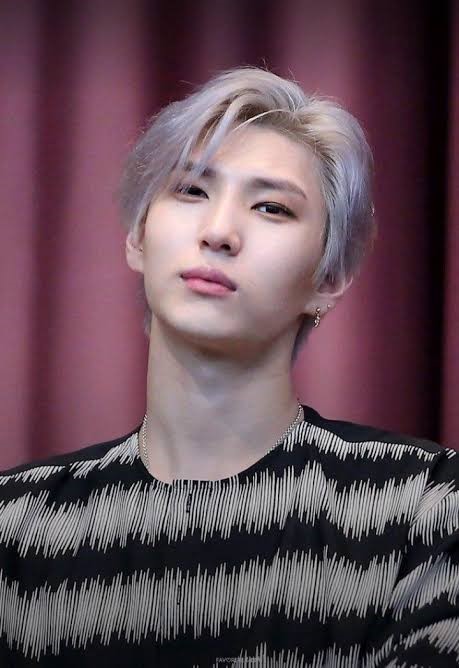
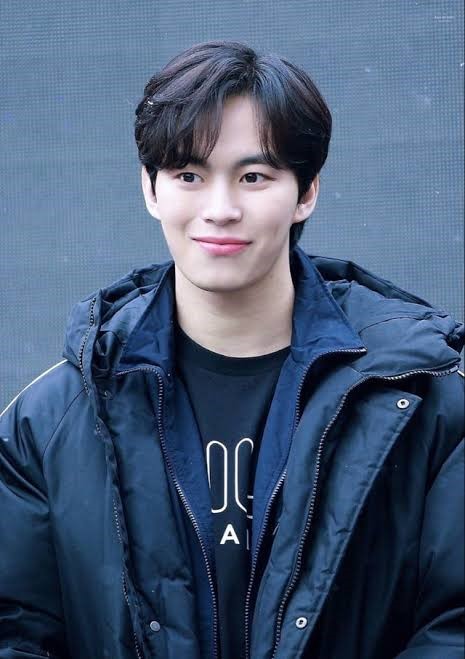



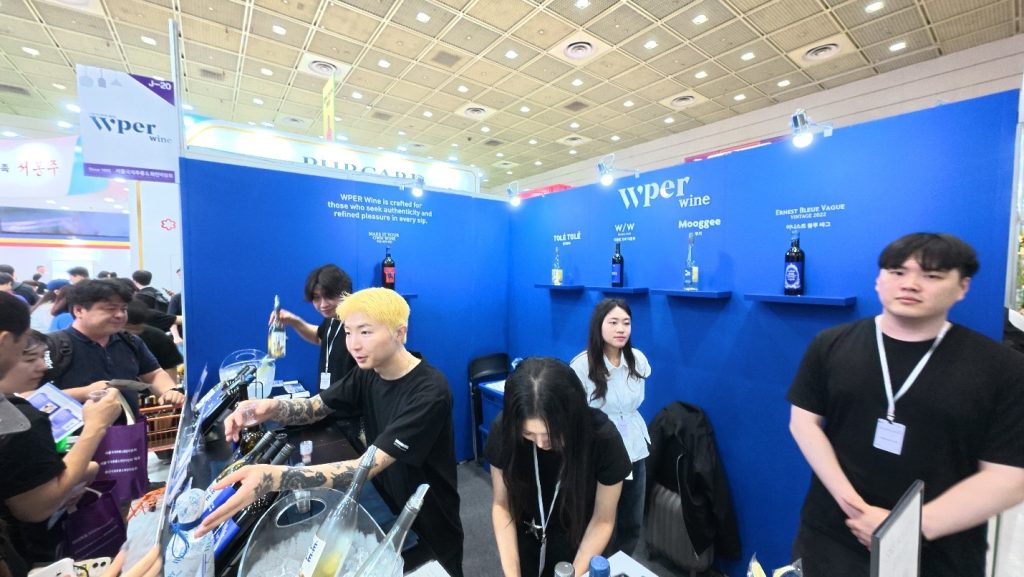
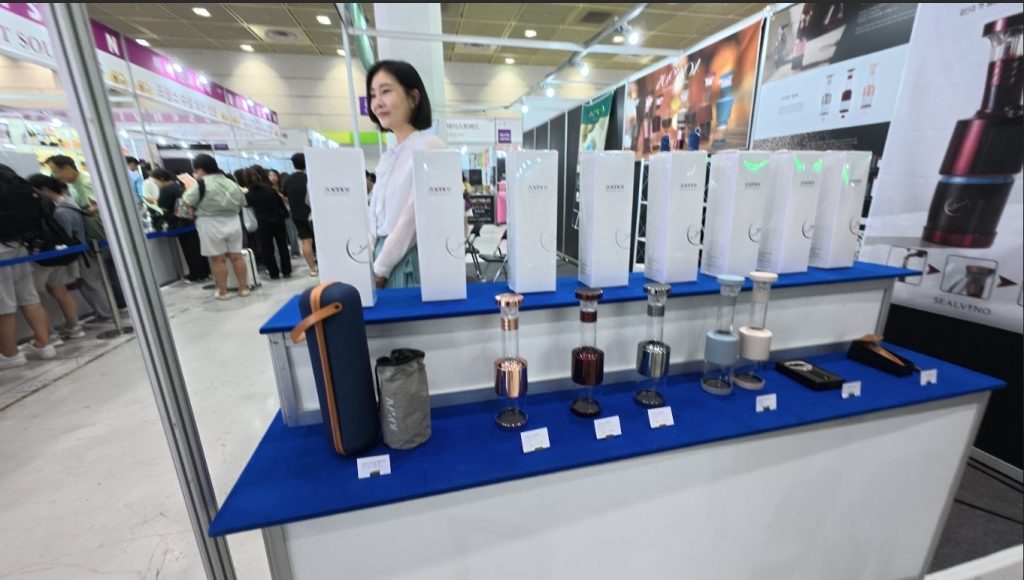
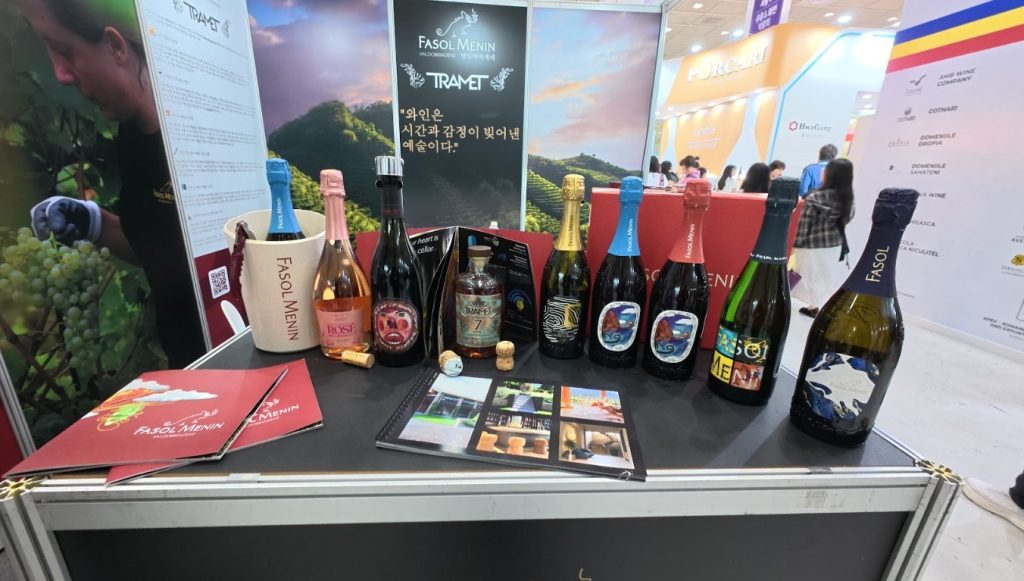






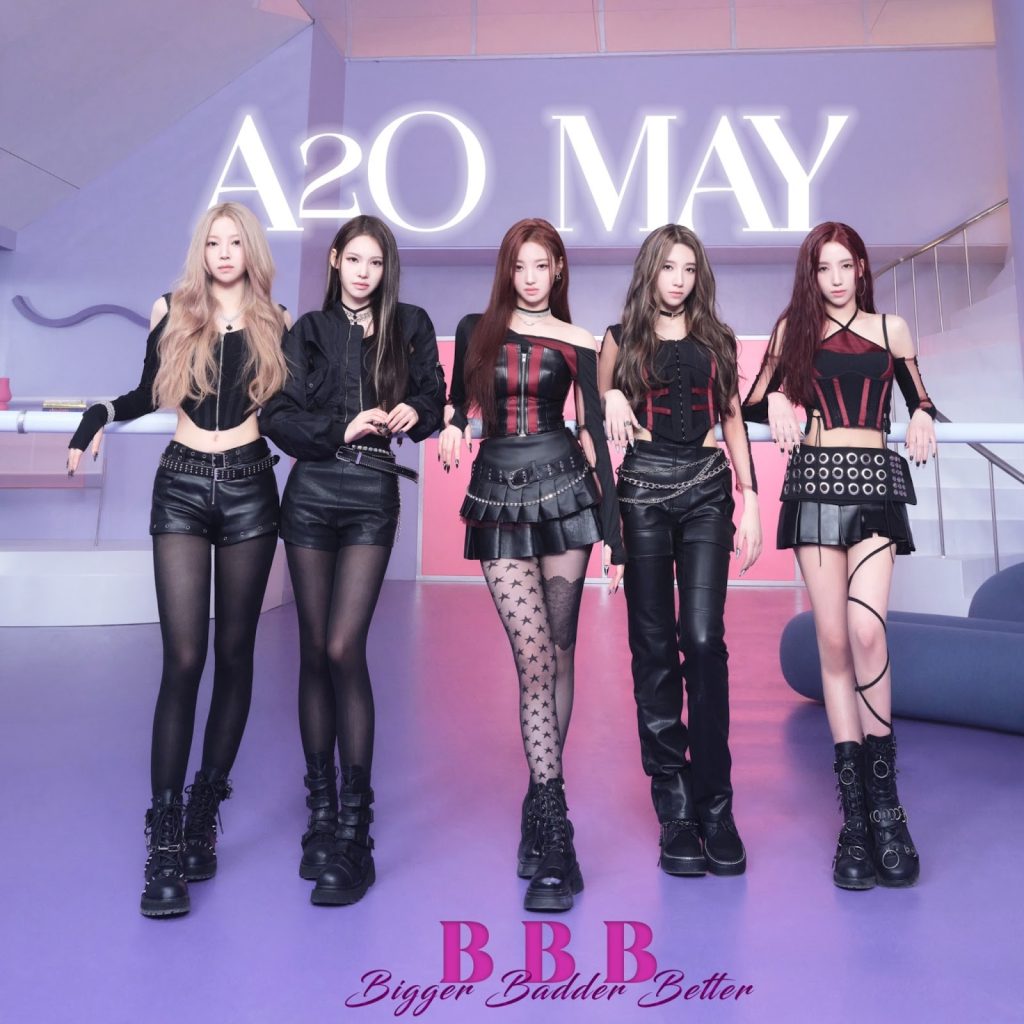
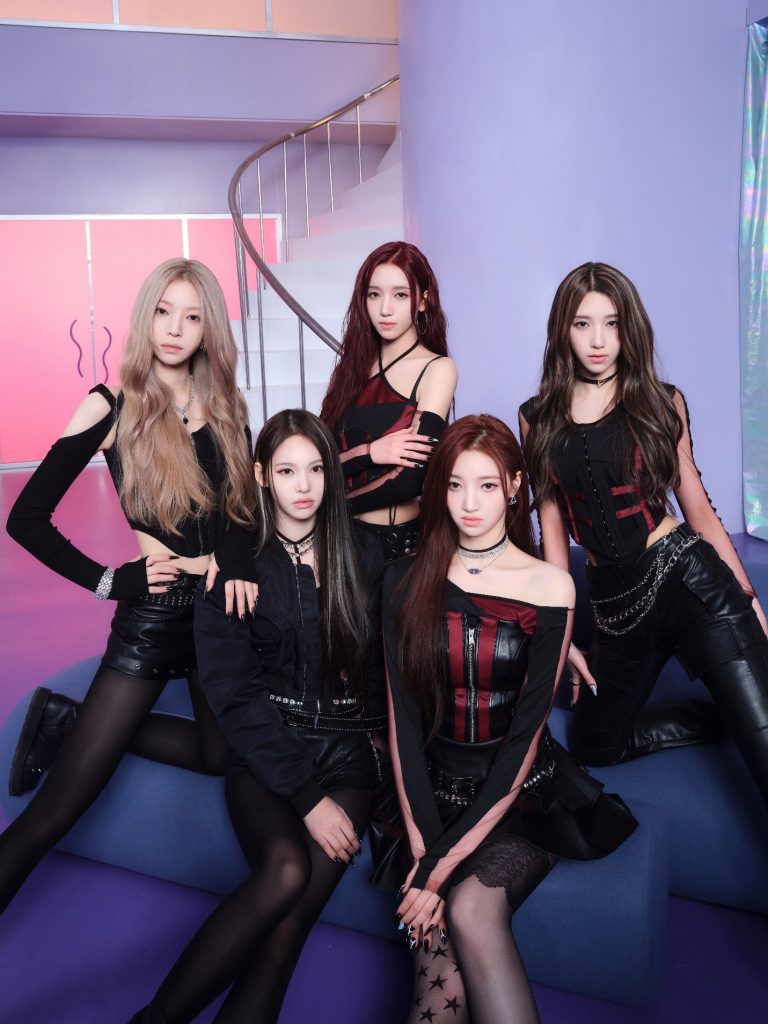


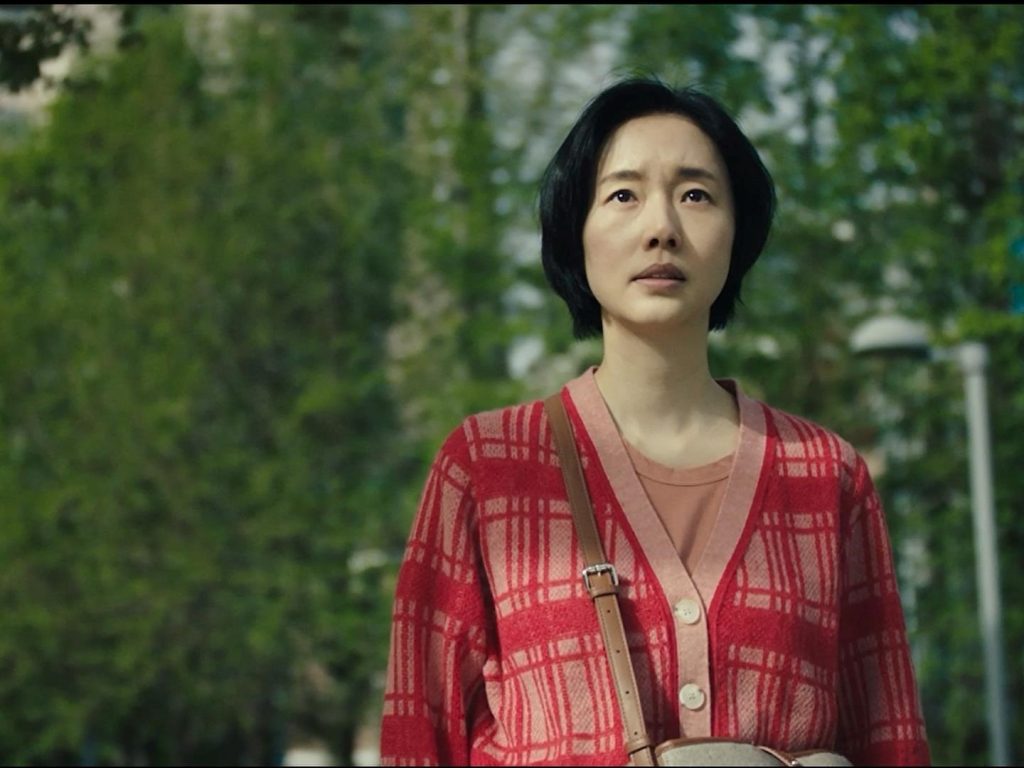
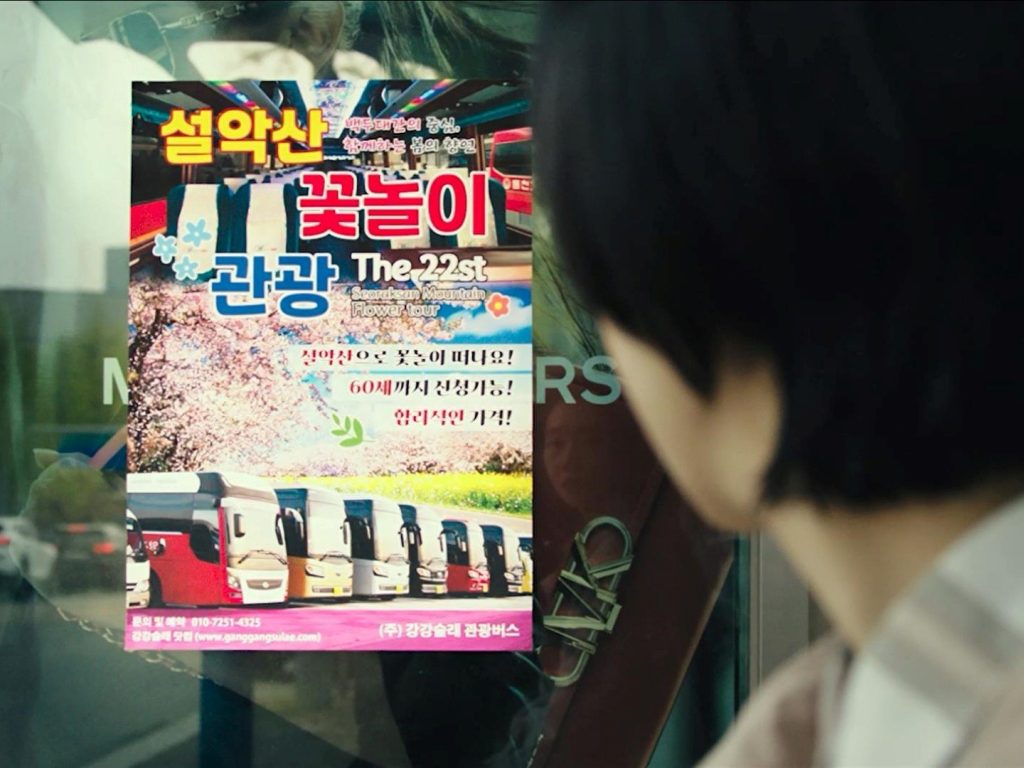


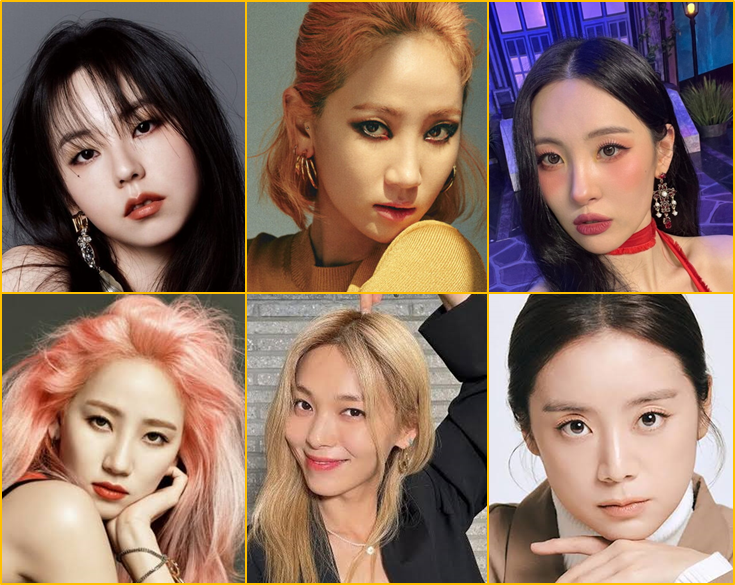
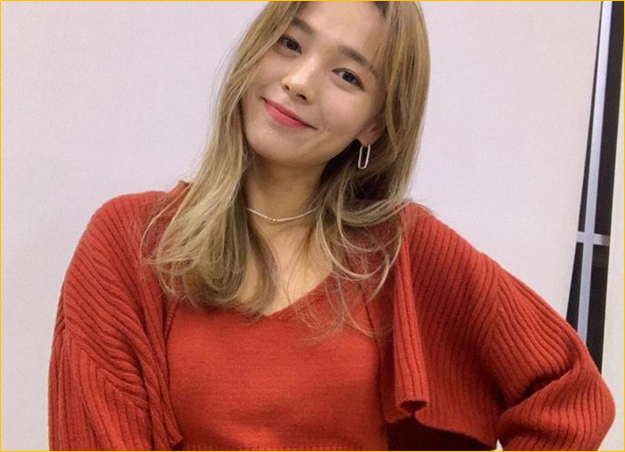

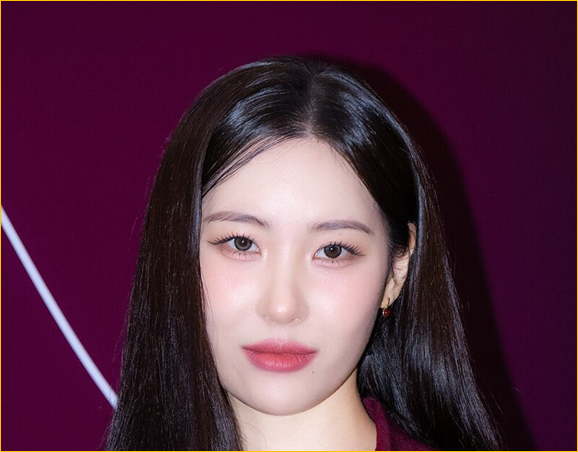

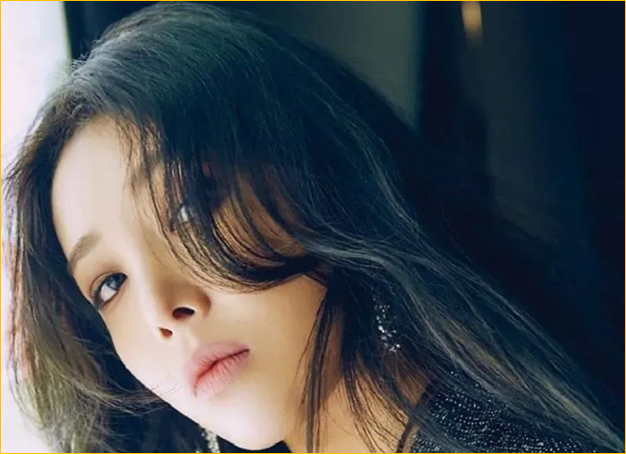
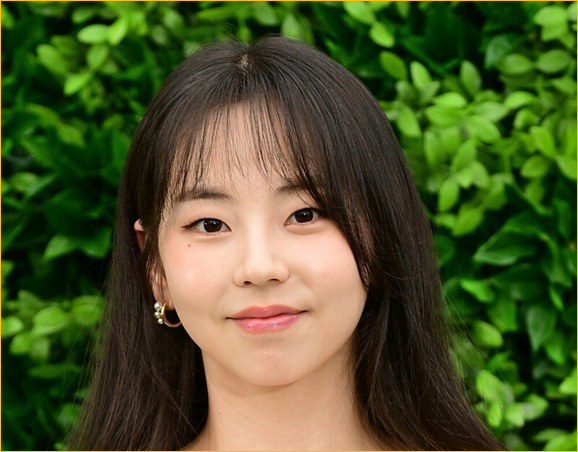
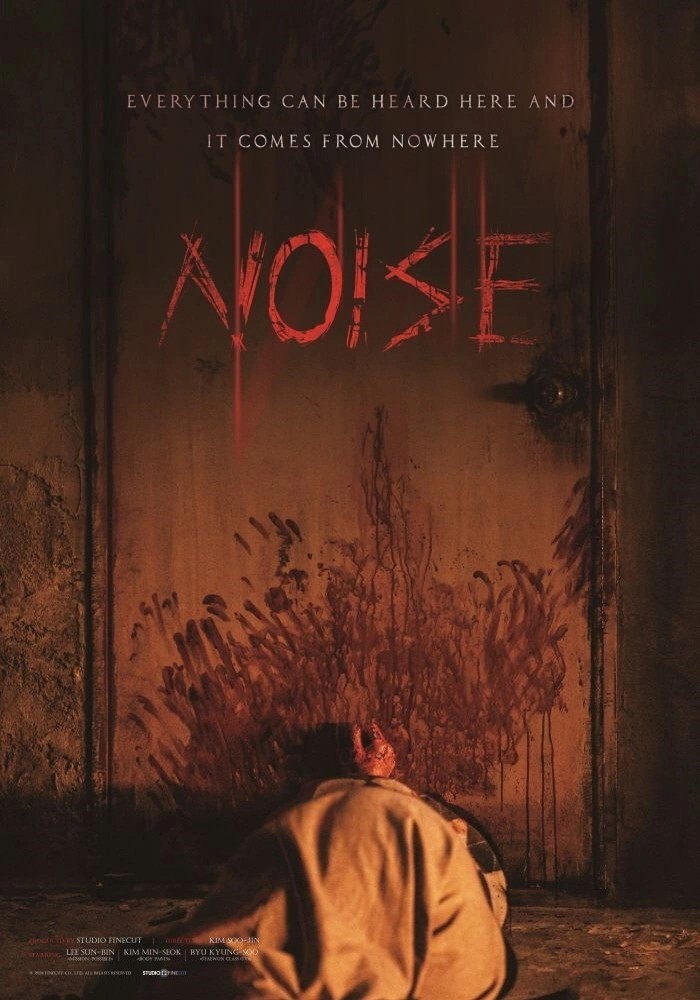
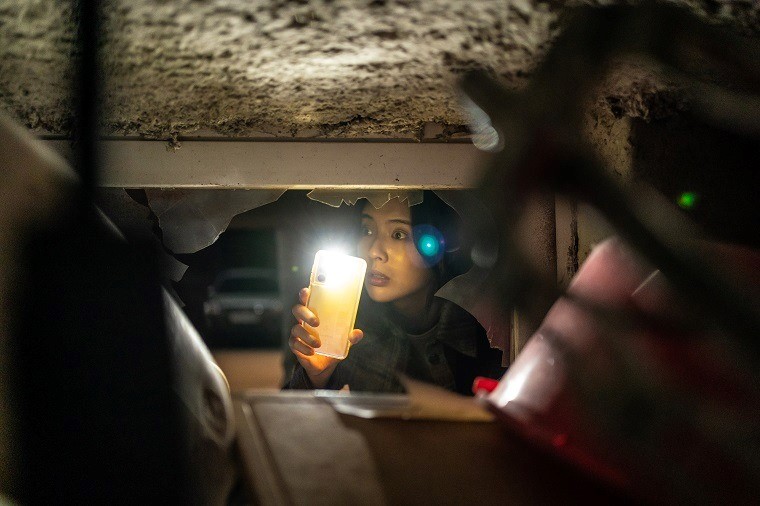
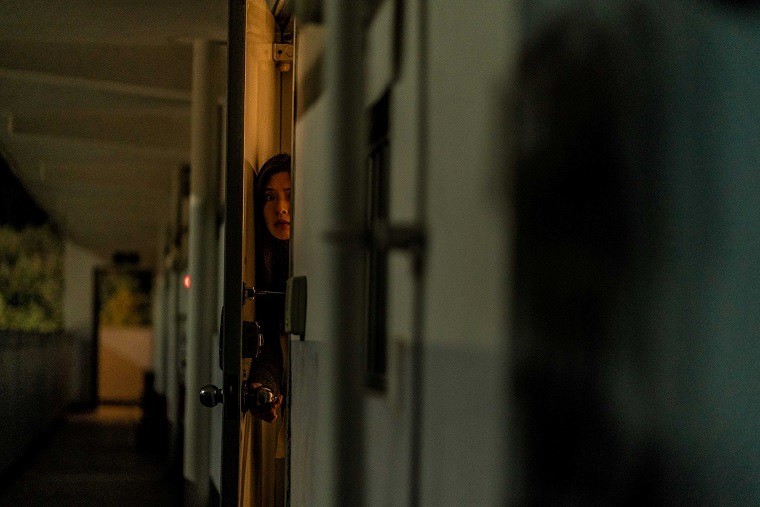
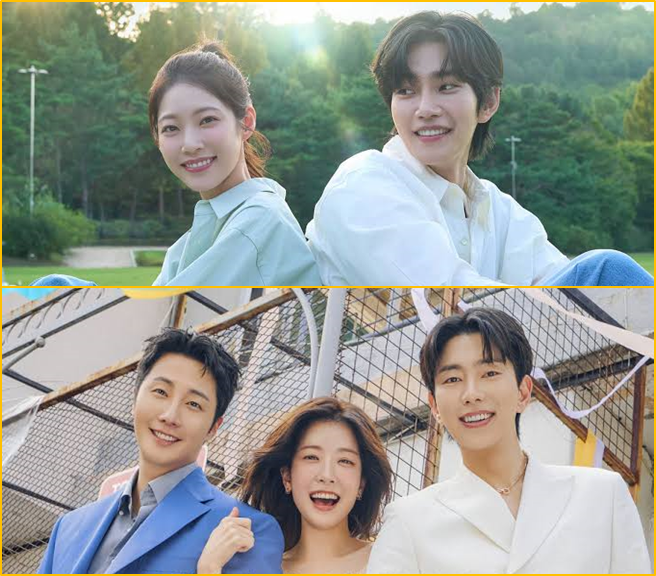
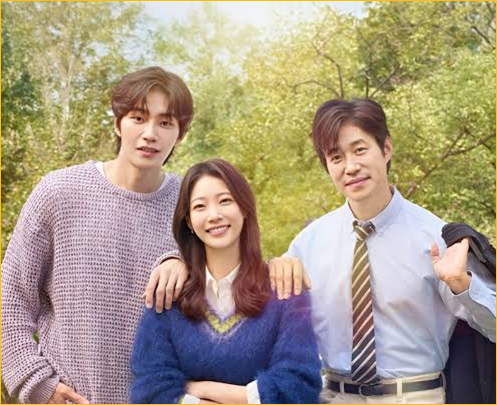
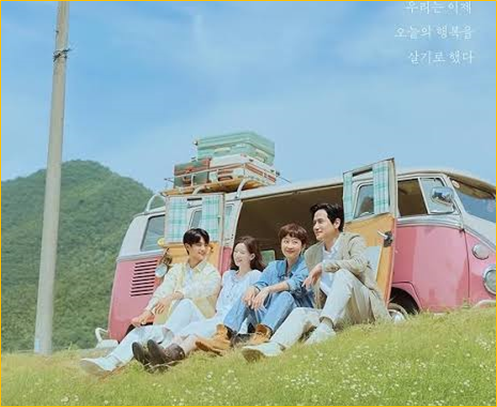





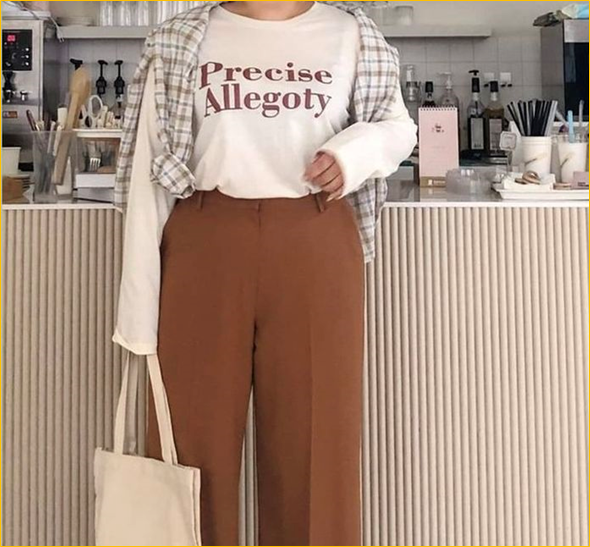
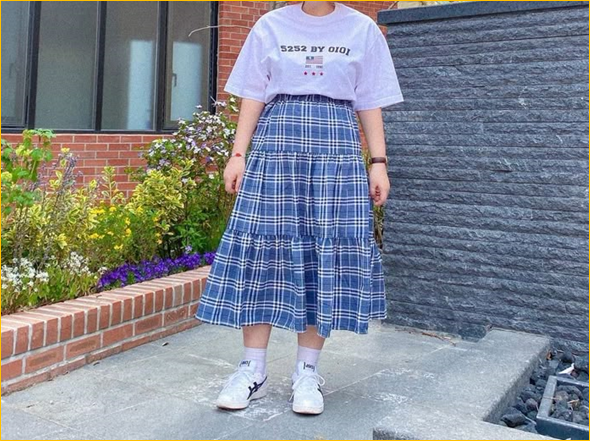
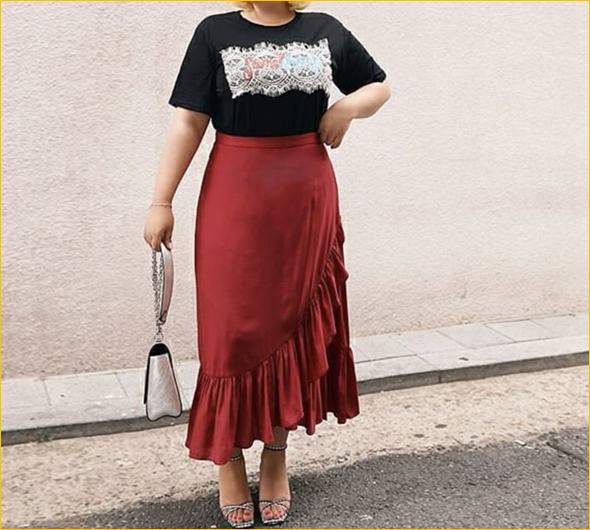


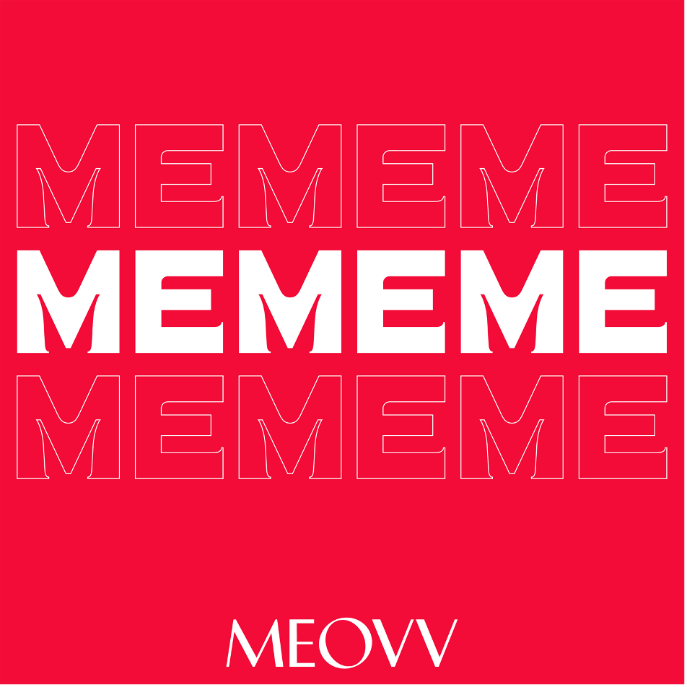

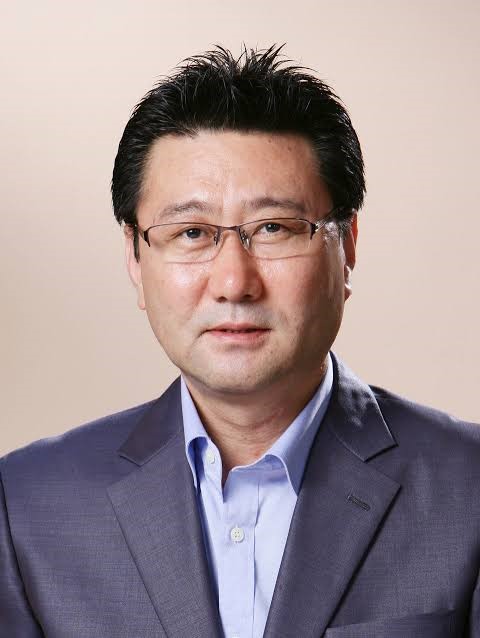 Choi Jung Woo
Choi Jung Woo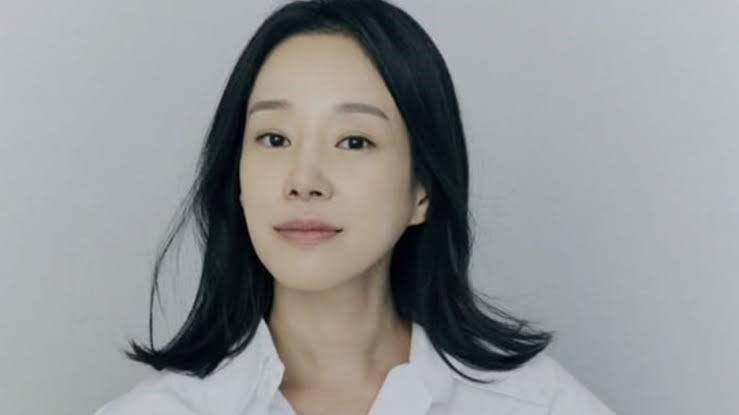
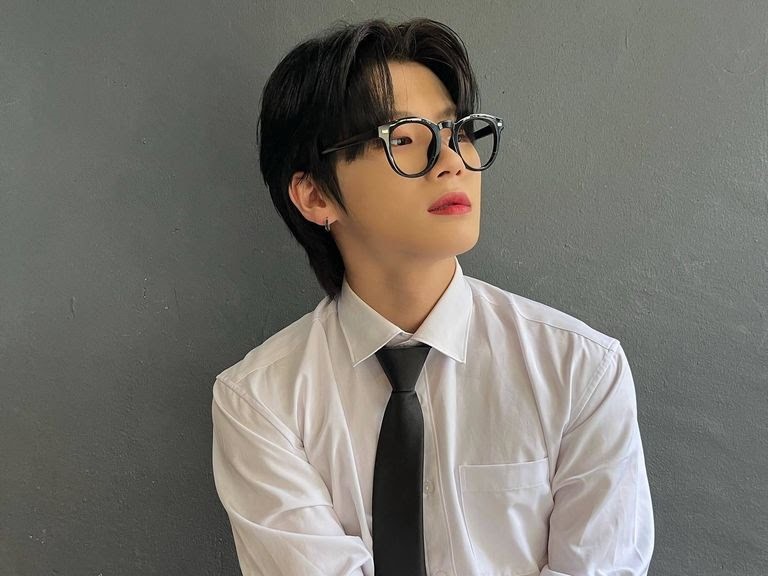



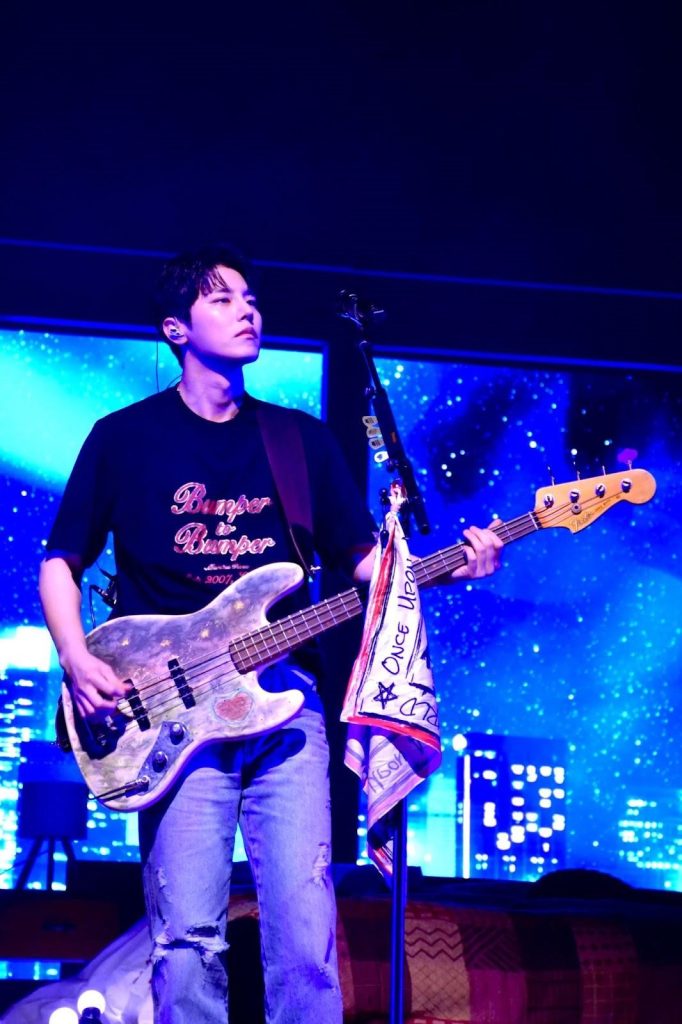
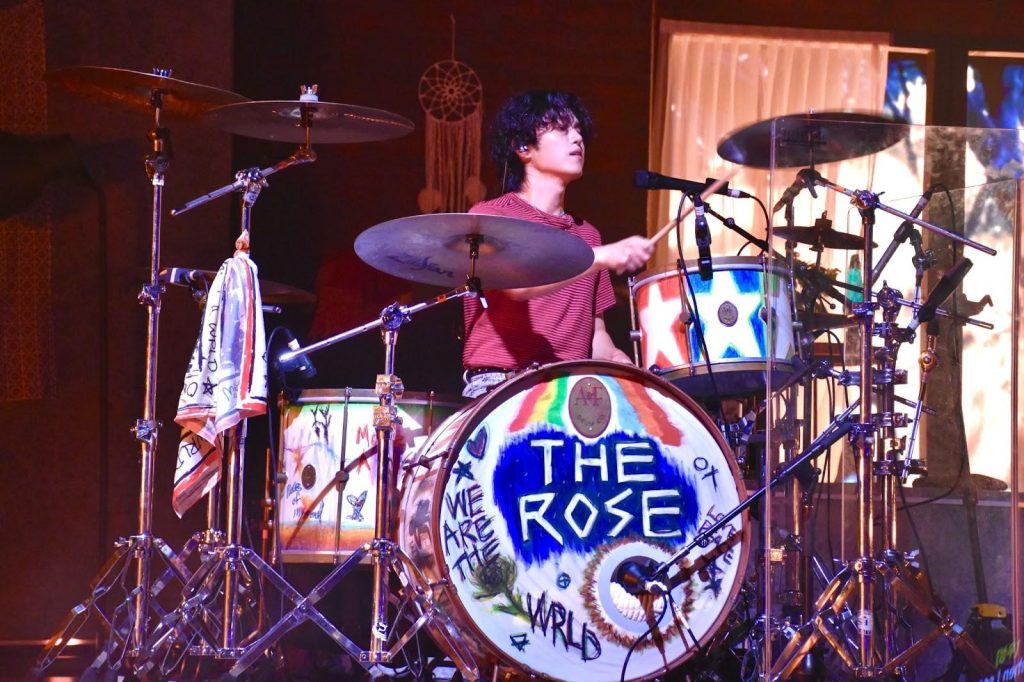
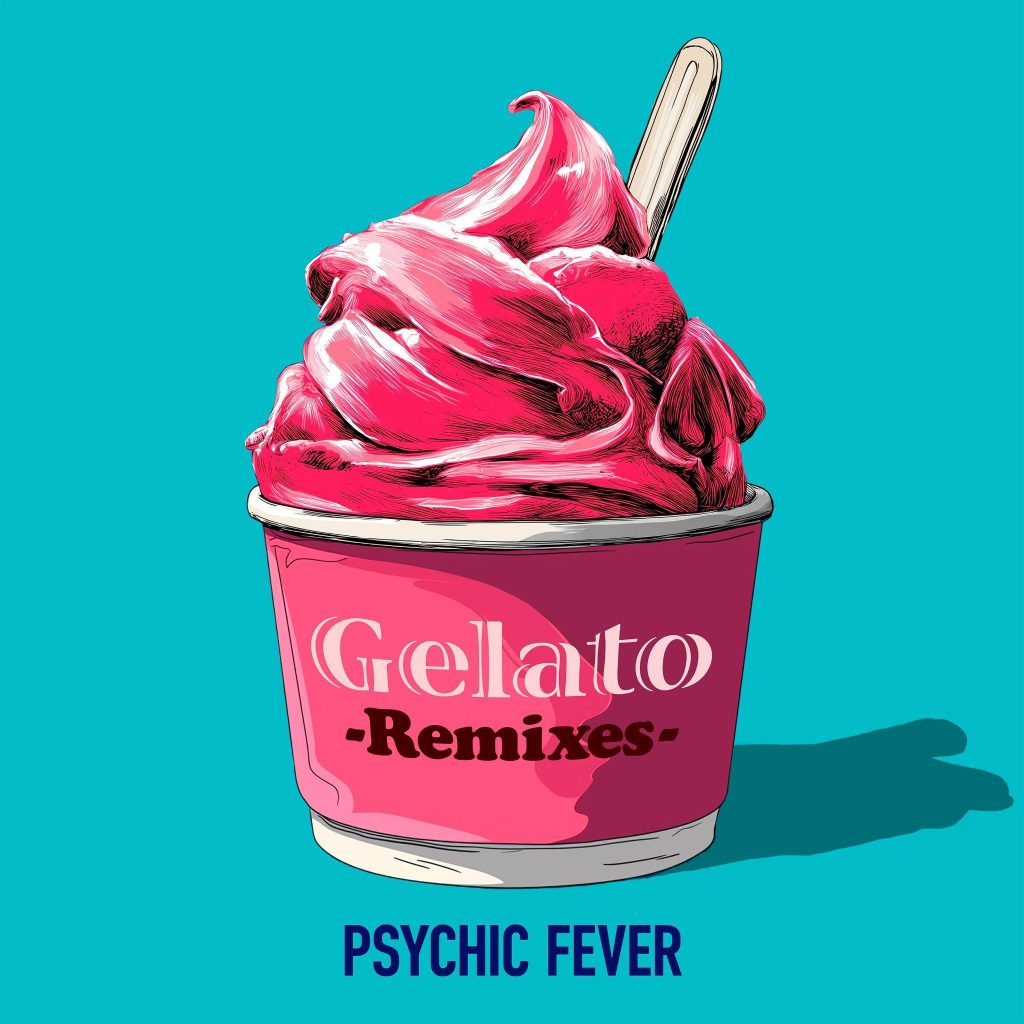
 ABOUT PSYCHIC FEVER
ABOUT PSYCHIC FEVER